Slave to the Game
Online Gaming Community
ALL WORLD WARS
PHOTOGRAPHS
OF THE
ATOMIC BOMBINGS OF
HIROSHIMA AND NAGASAKI
by The Manhattan Engineer District
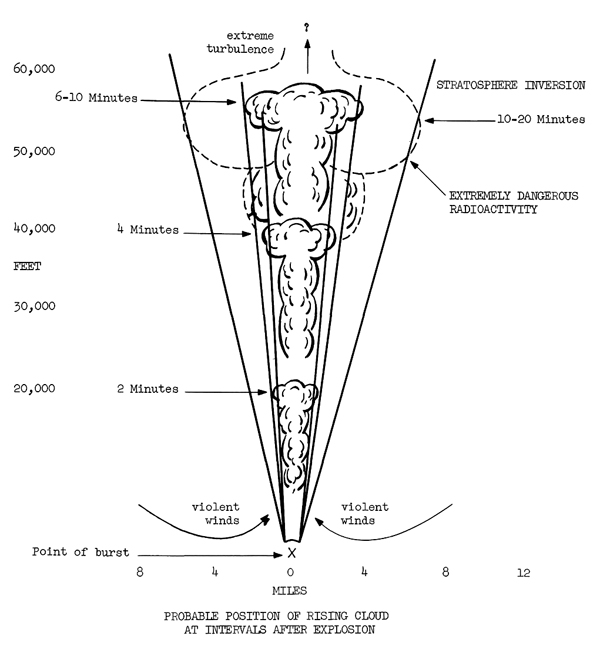
Figure 1. Probable position of rising cloud at intervals after explosion

Figure 2. HIROSHIMA, HIROSHIMA PREFECTURE, HONSHU. JAPAN

Figure 3. NAGASAKI, NAGASAKI PREFECTURE, KYUSHU, JAPAN
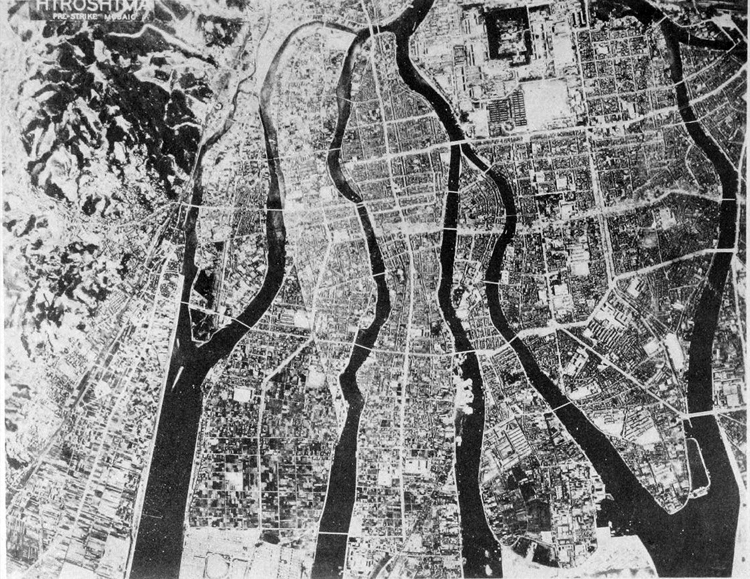
Figure 4.
Pre-strike aerial view of Hiroshima showing the high density of the built-up area. Fire lanes cleared by the Japanese are plainly visible.
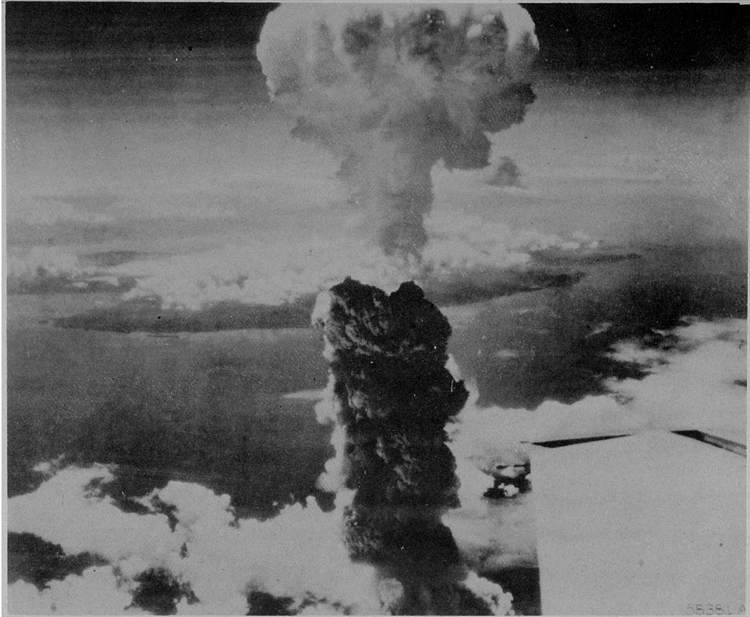
Figure 5.
The atomic bomb explosion over Nagasaki, taken from about 8 miles distance. The height of the top of the cloud is about 40,000 feet.

Figure 6. The Atomic Bomb Explosion over Hiroshima.

Figure 7. Panoramic view of Hiroshima after the bomb.
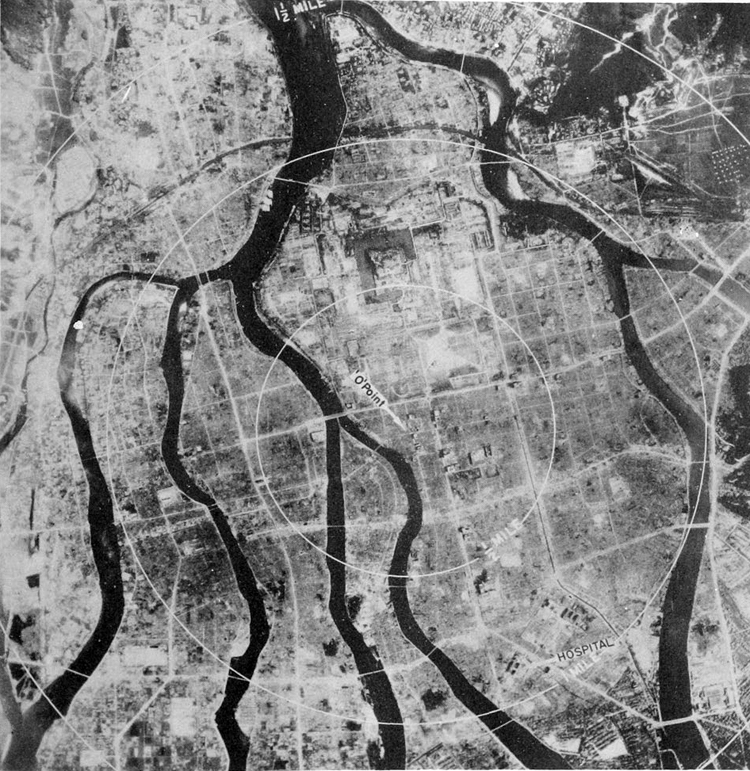
Figure 8. Aerial View of Hiroshima after the bomb.

Figure 9.
Panoramic view of Nagasaki after the bomb. Taken from North of X, locking south. The Y-shaped foundations in the foreground are the remains of the prison. All of this area was thickly covered with factories and dwellings.
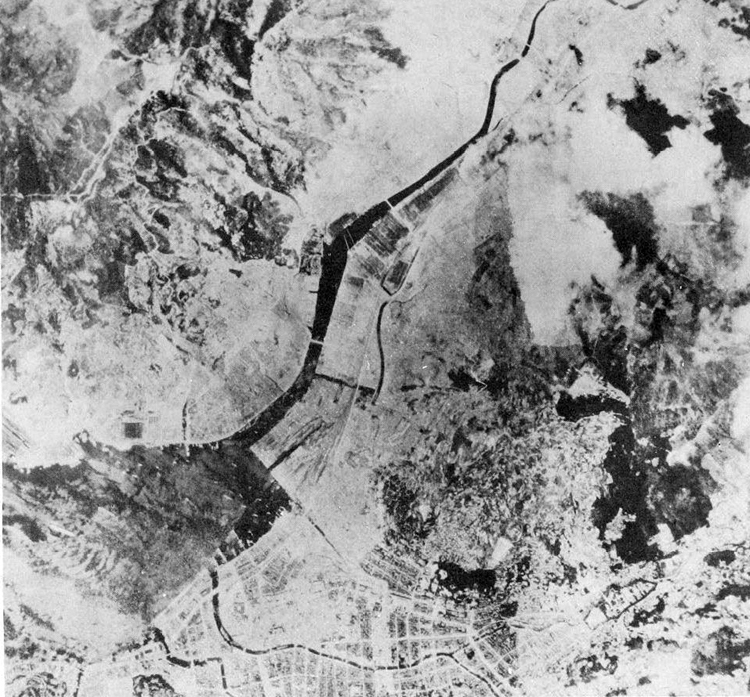
Figure 10. Aerial View of Nagasaki after the bomb.
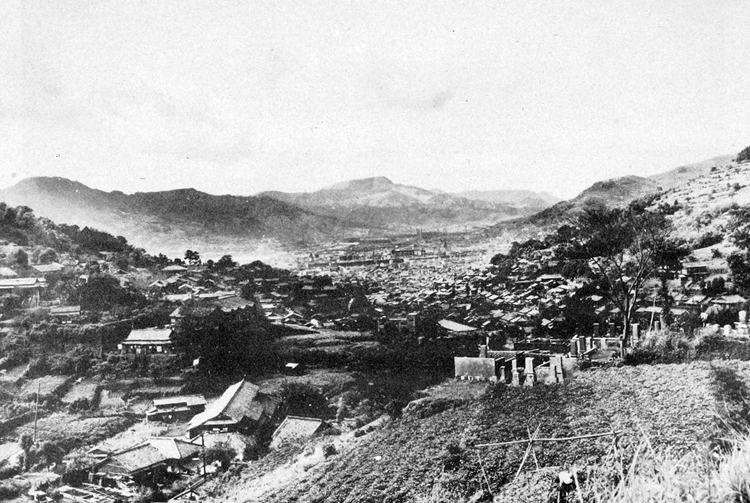
Figure 11.
General view of Nagasaki taken from about four miles southeast of X. The chimneys in the background are located at the Mitsubishi Steel and Arms Works. The hills in the right foreground shielded, a large part of the business and residential section from the full effects of the "bomb blast. This view shows typical Japanese residential construction, consisting of light frame houses with tile roofs, and shows how the hillsides are cultivated and inhabited almost to the tops.
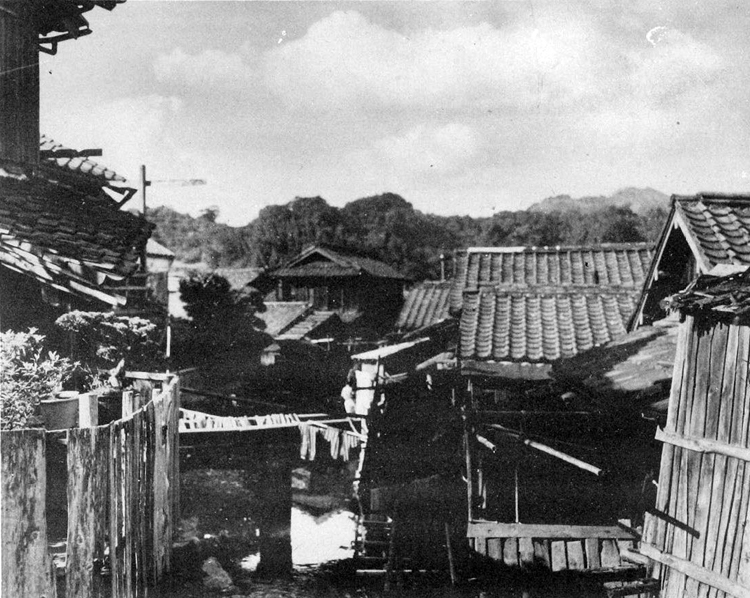
Figure 12. Typical Japanese dwellings with flimsy wooden frames and tile roofs.
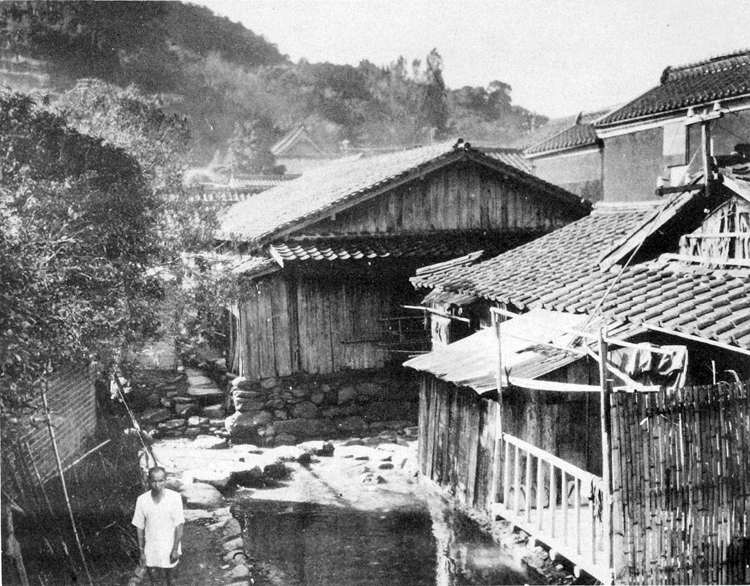
Figure 13. Another view of typical Japanese dwellings.
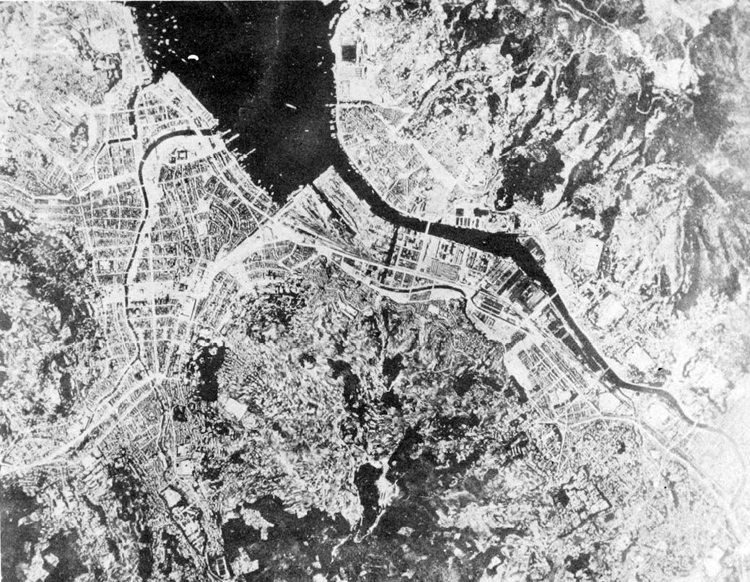
Figure I4.
Pre-strike aerial view of Nagasaki. X is just northeast of the stadium which ia visible in the upper right portion of the photograph. The main targets were the Mltsubishi-Urakami Ordnance Works (Torpedo Works) in the upper rlghthand corner of the picture, and the Mitsubishi Steel and Arms Works: which is spread out along the east bank of the Uratami River, in the central part of the picture. Mote how the industrial valley ia inclosed by eteep hills which tended to shield the main business and residential portion of the city (righthand portion of the picture) from the full effects or the blast. Fire lanes effected by the Japanese are also visible.
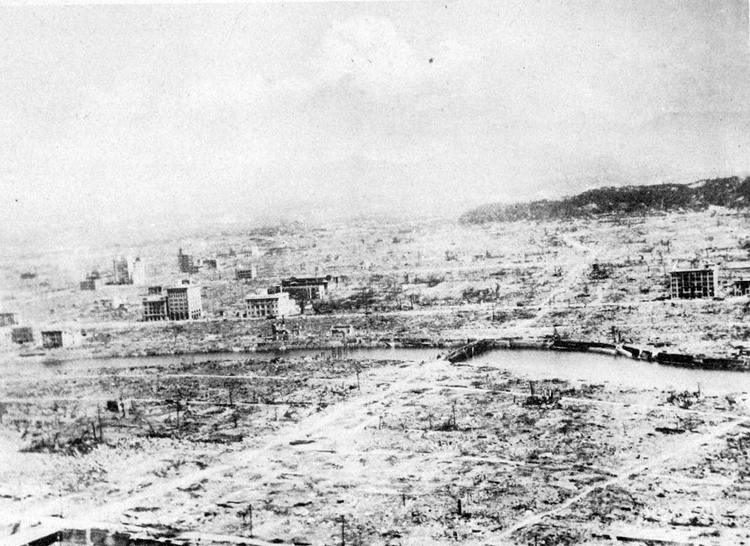
Figure 15.
General panoramic view of Hiroshima after the bomb. This picture shows the devastation from X to a point about 0.4 miles south of X.
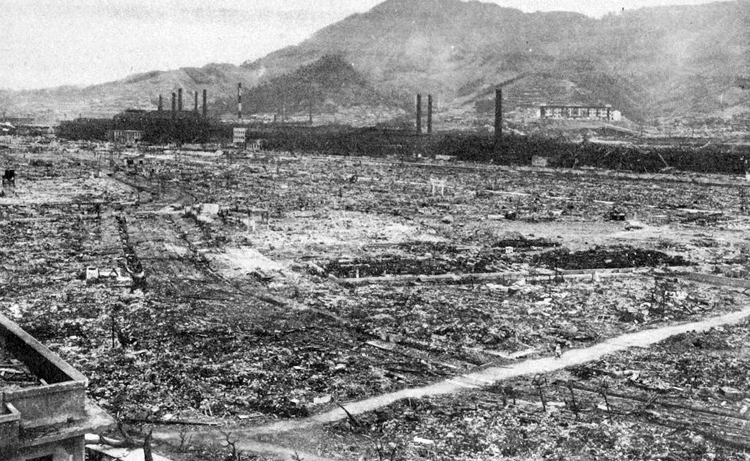
Flgurs 16.
General panoramic view taken from the Nagasaki Medical School and Hospital, looking southeast. In the foreground, at the foot of the hill on which the Medical School 1B located, the double-track street railway loop to the hospital buildings will be noticed. There was practically no damage to the tracks themselves, but the trolley wires vere knocked down and the tracks covered with debris. The whole area shown, in this picture was covered with, industrial buildings and amall residences almost as close together as it was possible to build them. In the background, the skeleton remains of the Mitsubishi Steel and Arms Works can be seen. Note that the reinforced concrete office buildings still stand amid the wreckage of steel frame buildings. In the reinforced concrete school buildings at the foot of the hills in the background, the doors, window, celling, and building contents were damaged by the blast.

Figure 17.
View of the Military Area in Hiroshima. This view allows the almost complete destruction of ordnance, storage and administrative buildings located in the northeast section of the military area.
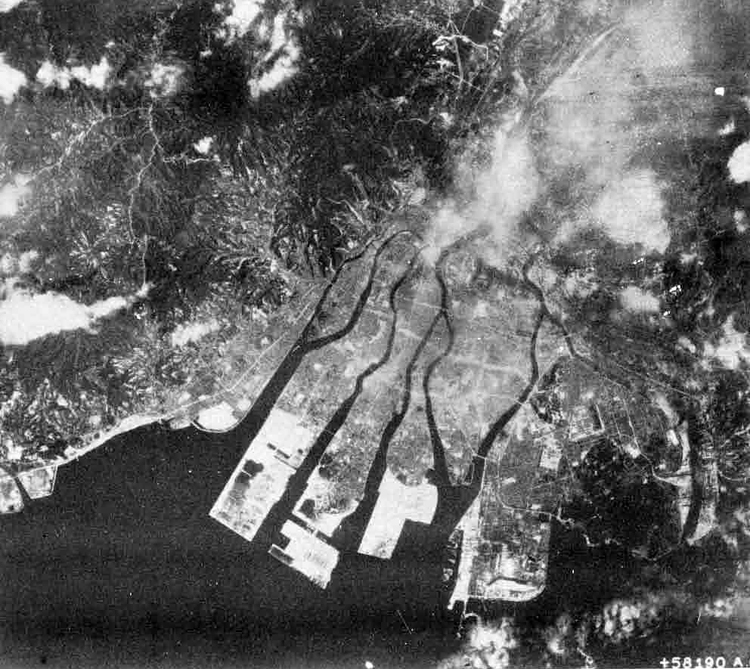
Figure 18. Post-strike aerial view of Hiroshima after the bomb.
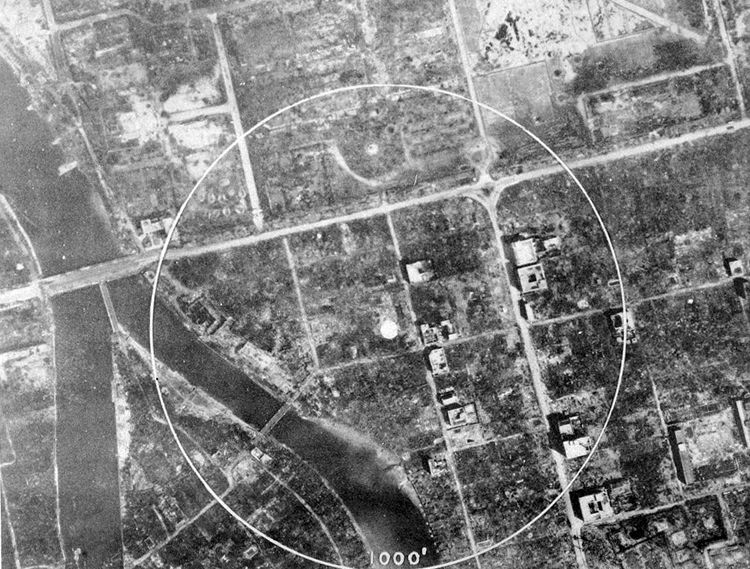
Figure 19. Aerial view looking directly down on X in Hiroshima, showing the target area comletely leveled except for reinforced concrete building frames. Roofs and intemediate floors collapsed on five of these buildings leaving the exterior walls partially standing, The dark spots on the roofs of other buildings are depressions formed by the downward distortion of the roof structure.
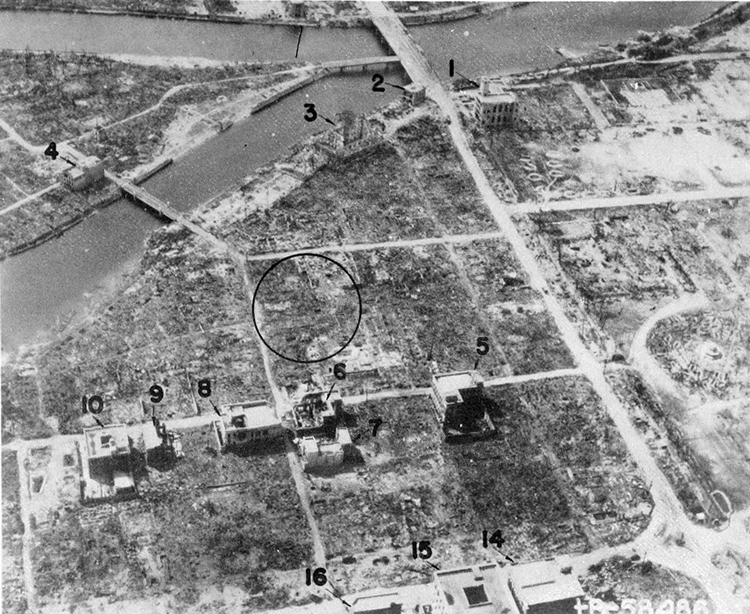
Figure 20.
Aerial view of Hiroshima, looking down on X which is in the center of the picture.
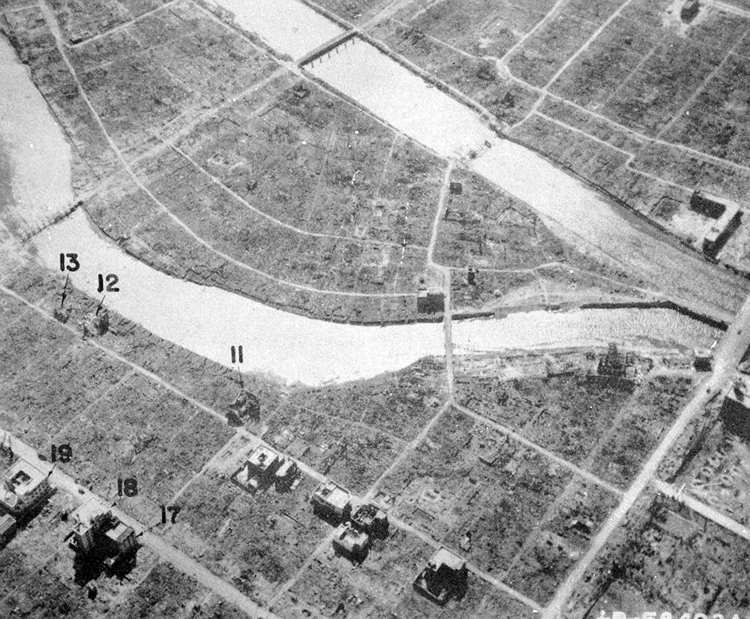
Figure 21. Another aerial view of Hiroshima showing the area immediately surrounding the center of damage.
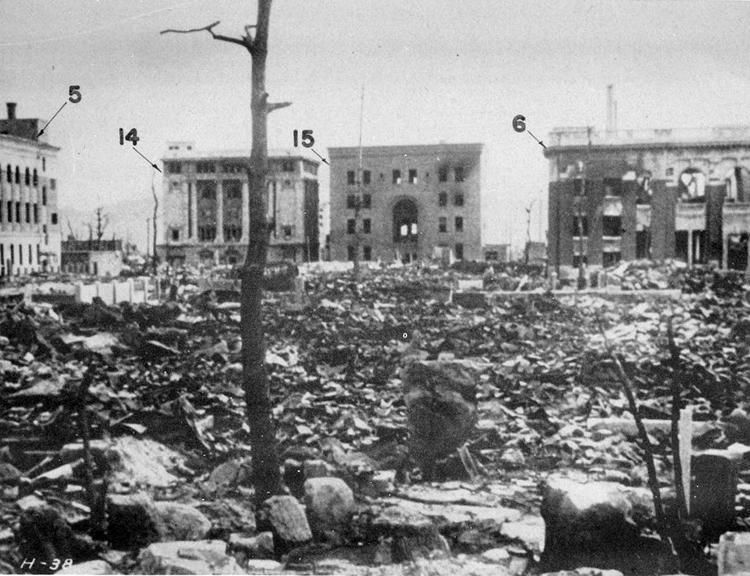
Figure 22.
Looking east from X. The trunk of a small tree standing in the foreground indicates that the force of the blast was directly downward in this area.
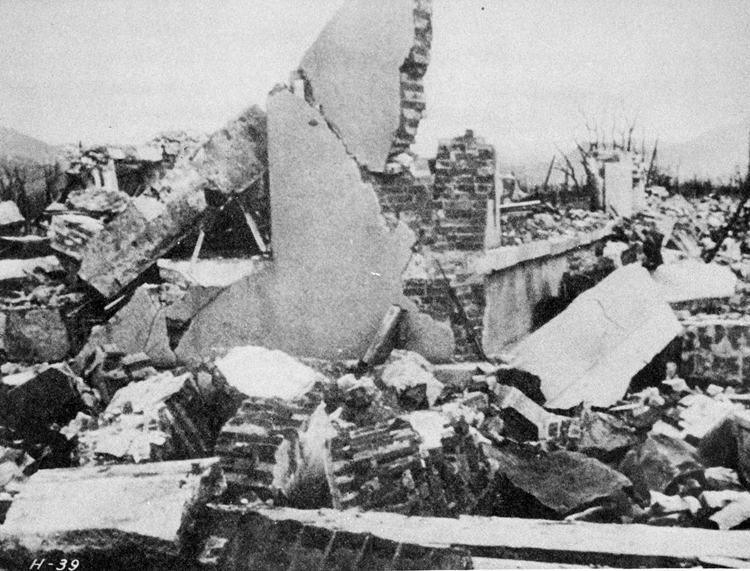
Figure 23. The shattered walls of a trick building near X in Hiroshima.
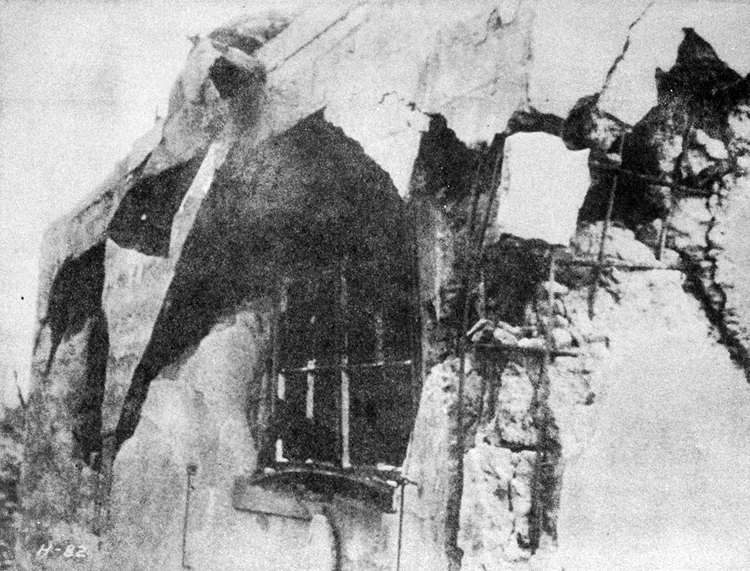
Figure 24. A concrete vault 200 feet north of X in Hiroshima.
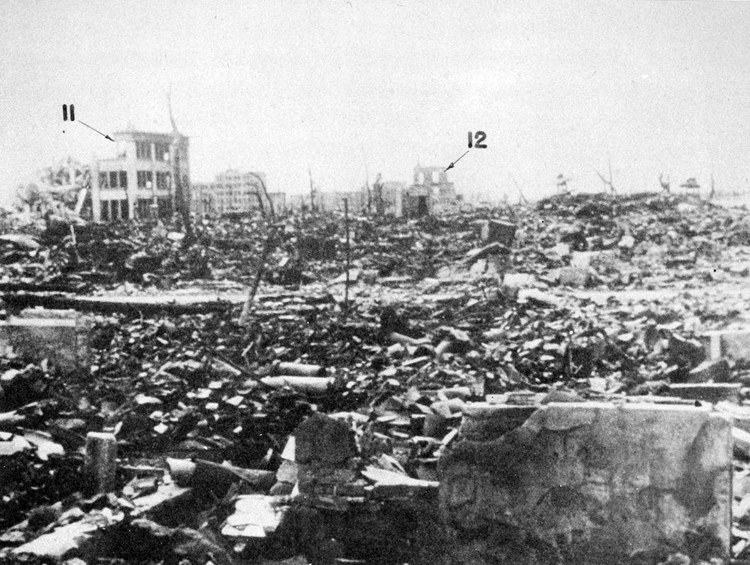
Figure 25.
The devastated area south of X in Hiroshima. The collapsed Hiroshima Gas Corapanj buildings may be seen at the left of the picture. The Electric Company building, 0.4 miles from X, may be seen in the background.
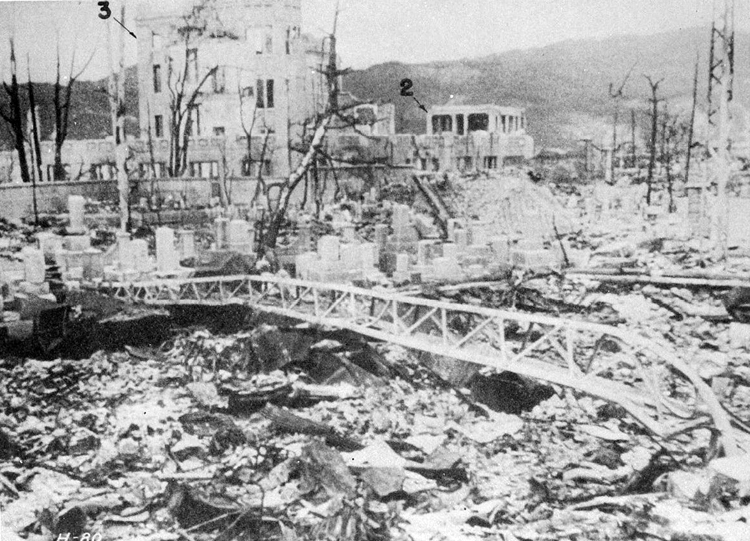
Figure 26.
Commercial Museum 700 feet west of X in Hiroshima. The steel tower in the foreground collapsed in the direction of the blast. The monuments in the oemetery were not overturned because the blast pressure was largely downward, in this area.
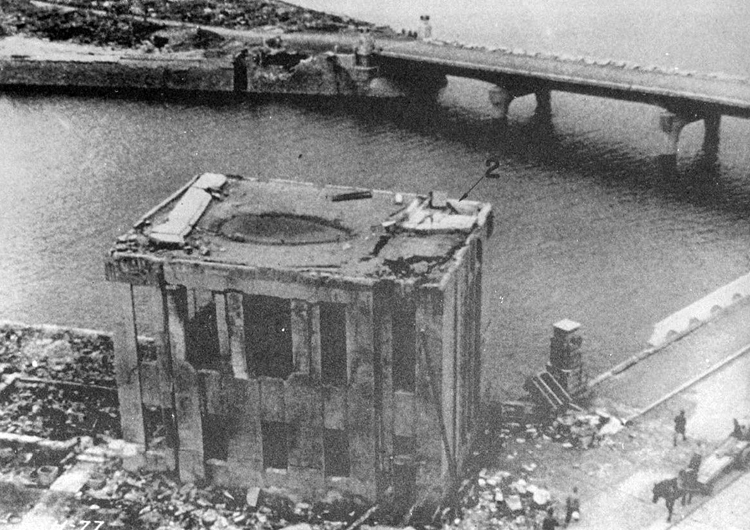
Figure 27.
Typical reirrforced concrete building 1000 feat northwest of X. The concrete roof slab was supported by concrete teams with no interior columns. The interior beams failed, causing the roof slab to settle as shown. The entire parapet wall was demolished, one section resting on the road, having blown in the direction of the blast.

Figure 28.
Bridge, 1000 feet northwest of X in Hiroshima. The blast pressure at this point had a considerable vertical component. Along the center and left side of the bridge, the concrete girders supporting the floor slab did not fall; however, to the right of the center, girders under several spans failed, causing considerable settlement in the floor slab. One depression can be seen in the right foreground of this picture.
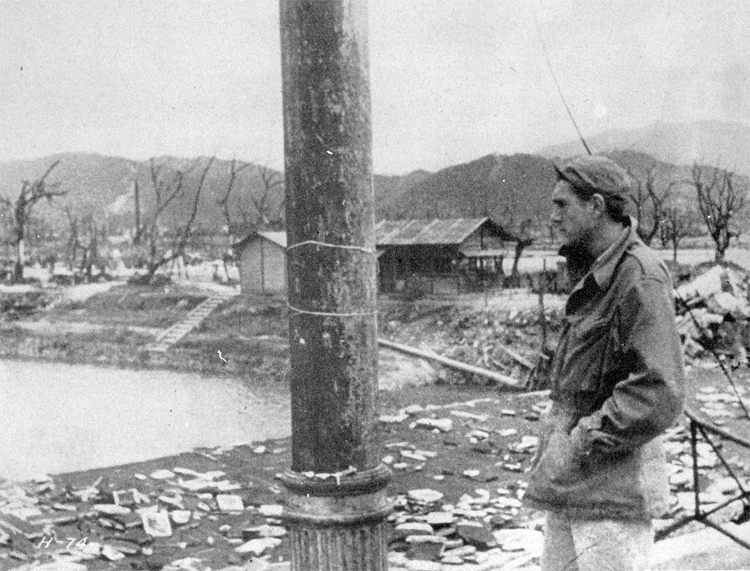
Figure 29.
Steel pole 1000 feet northwent of X In Hiroshima, showing flash burns on the side facing the blast. The two small buildings in the background were built after the explosion.
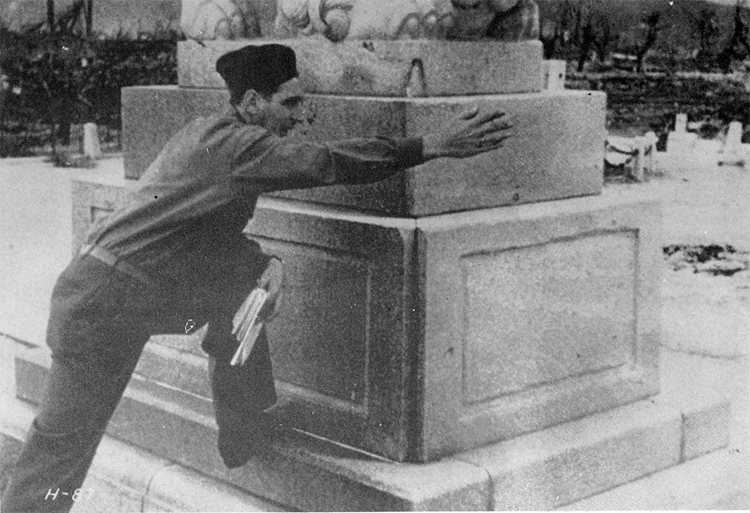
Figure 30.
Shinto Shrine 1/4 mile north northwest of X in Hiroshima. The soldier is pointing toward X. The stone surfaces on the right were roughened by the blast while the darker surfaces on the left detained a polished surface.
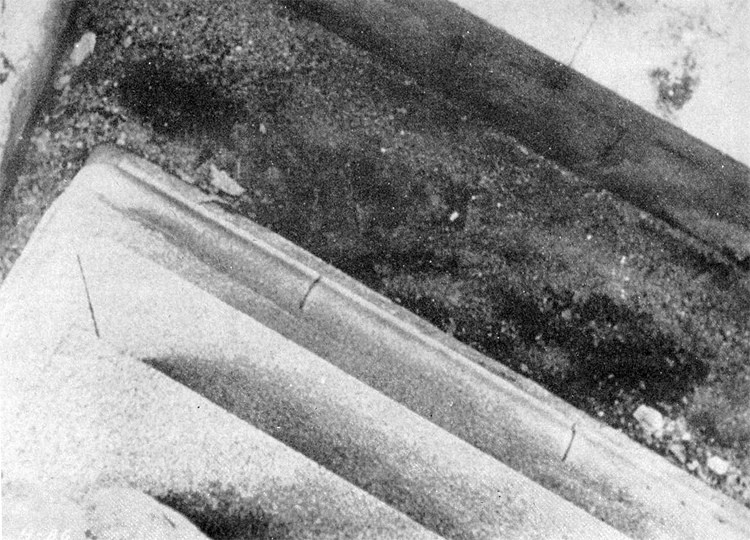
Figure 31.
Shinto Shrine 1/4 mile north northwest of X. This close-up of the base of the monument shown in the preceding. Figure shows the roughened, surface of the stone at a corner exposed to the blast.
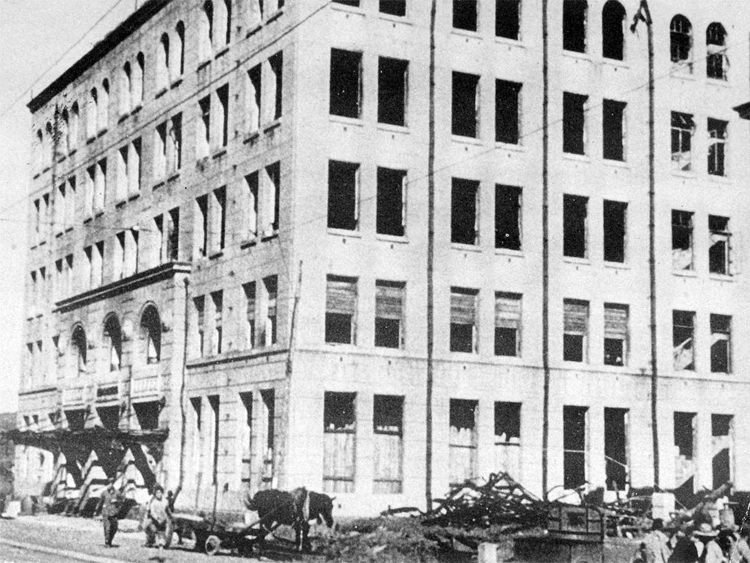
Figure 32.
The Electric Company building 0.4 miles south of X in Hiroshima. This flve-story reinforced con¬crete building was not severely damaged by the blast; however, fires of secondary origin gutted the building. At the time this picture was taken, the building had partially been reoccupied.

Figure 33
Bridge 0.6 mile southwest of X in Hiroshima. This view shows asphalt pavement darkened by flash burns except where shielded, by bridge posts or railing. The soldier is pointing toward X.
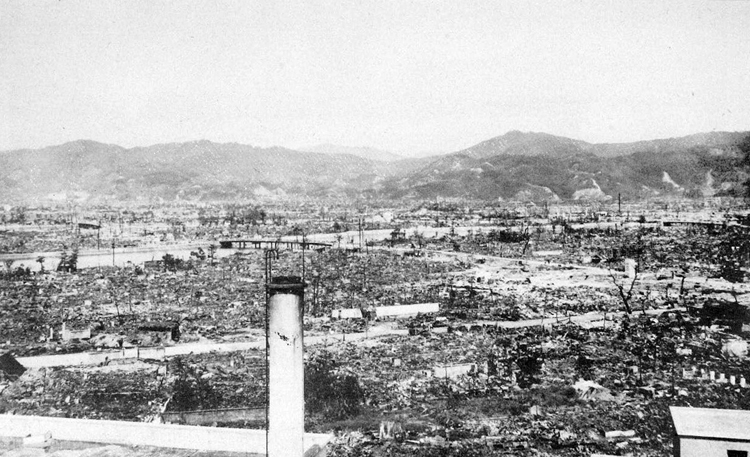
FFigure 34. Panorama of Hiroshima looking northwest from the Red Cross Hospital 0.9 mile south of X. This view shows the burned-out area extending to the hills along the west side of the valley.
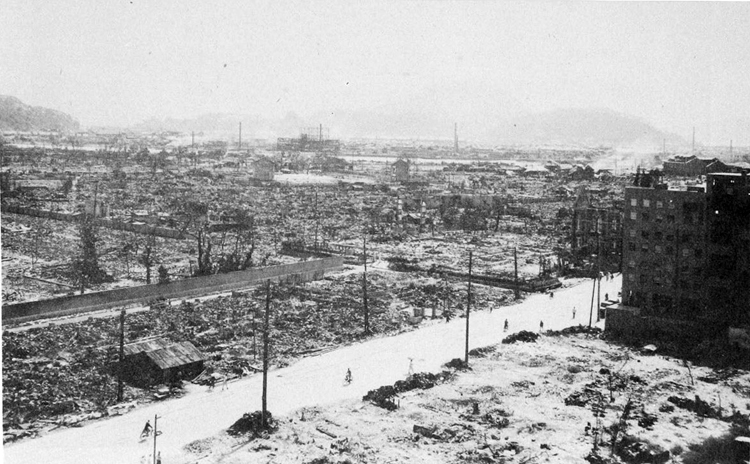
Figure 35. Looking east from the Red Cross Hospital, 0.9 mile south of X. The reinforced concrete Communications Bureau building in the right foreground is one mile from X. Damages to the building were not extensive and were similar to those at the Red Cross Hospital. The two standing walls in tie center background are parallel to the direction of the blast. The framework of two gas-holders may be seen in the center background 1.2 mile from X. The crowns of the holders were dished down and torn open. The buildings of the Commercial Gas-works were seriously damaged. Large building seen on the right of the gas-works and farther back are part of the Army Clothing Depot. The burned out area extends to the river in the background.
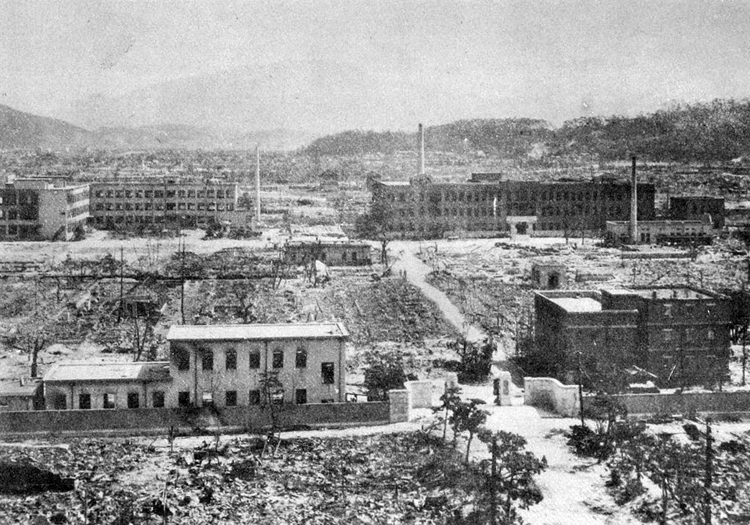
Figure 36. University of Hiroshima, 0.8 to 0.9 mile south of X, looking northeast from the Bed Cross Hospital. The buildings shown were of reinforced concrete construction and were not severely damaged structurally. Other buildings in this group were of wooden construction and were destroyed "by blast and fire. The buildings still standing were gutted by fires of secondary origin. The end walls of two otherwise demolished buildings may be seen in the center background; these walls are parallel with the direction of the blast which was from left to right.
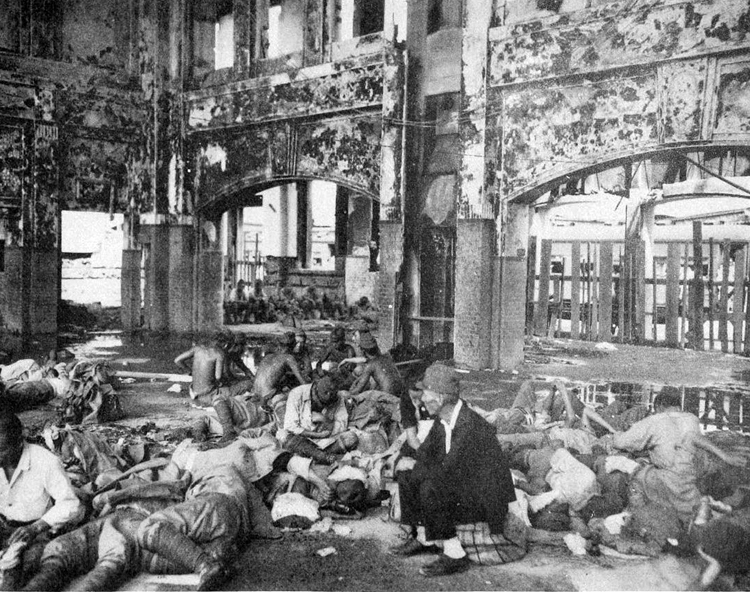
Figure 37. The East Hiroshima Railroad Station, 1.1 miles east of X. This view shows discharged Japanese soldiers waiting in the damaged station.
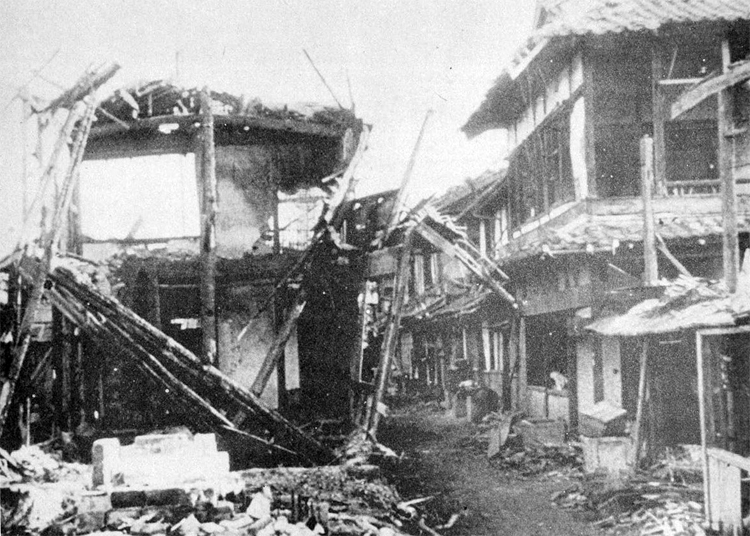
Figure 38. This view shows damaged buildings which are generally classified as "moderate blast damage to frame buildings", and is typical of damage to frame buildings 1.25 to 1.50 miles from X in Hiroshima.
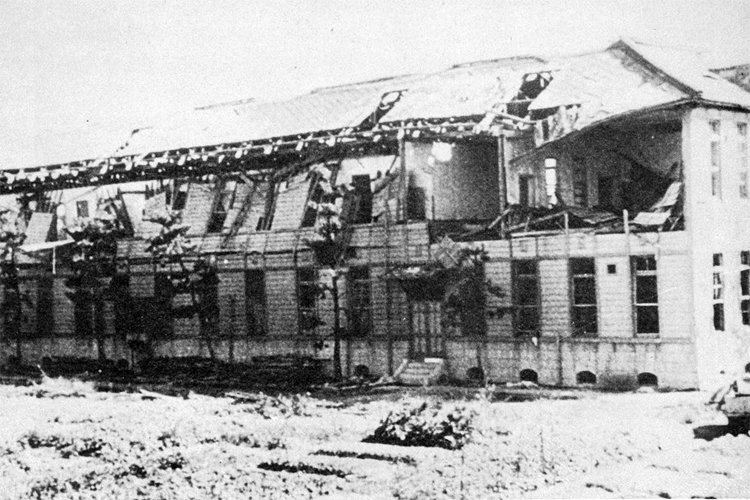
Figure 39. Part of Hiroshima College 1.6 miles southeast of X. The frame work of the upper story has been shoved in the direction of the blast.
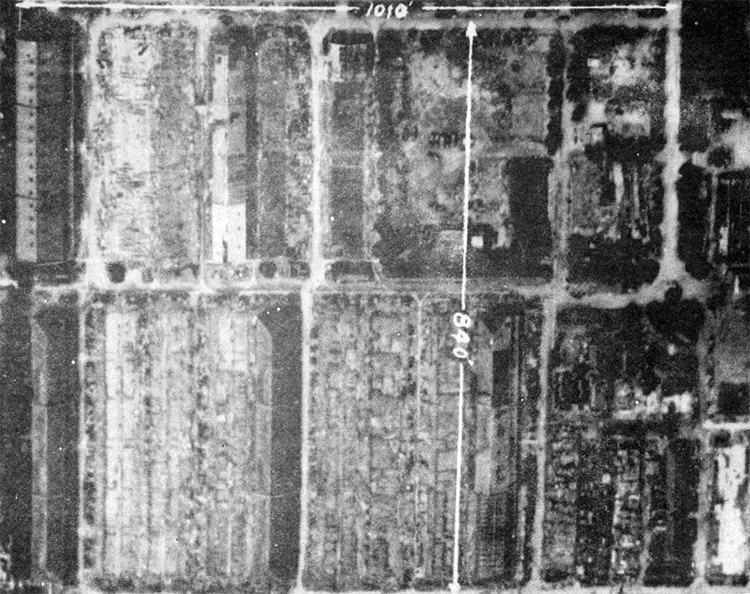
Figure 40. Aerial view of the demolished Army Clothing Depot, 1.7 miles southeast of X in Hiroshima. Ten large warehouses were demolished in this area. Of the eight warehouses remaining, two show extensive roof damage.

Figure 41. Typical residence damage four miles from X. Windows were shattered and one section of the window framing broken.

Figure 42. Steel-framed building, 0.3 mile east of X in Hiroshima. The entire framework of this building was distorted downward in the direction of the blast.
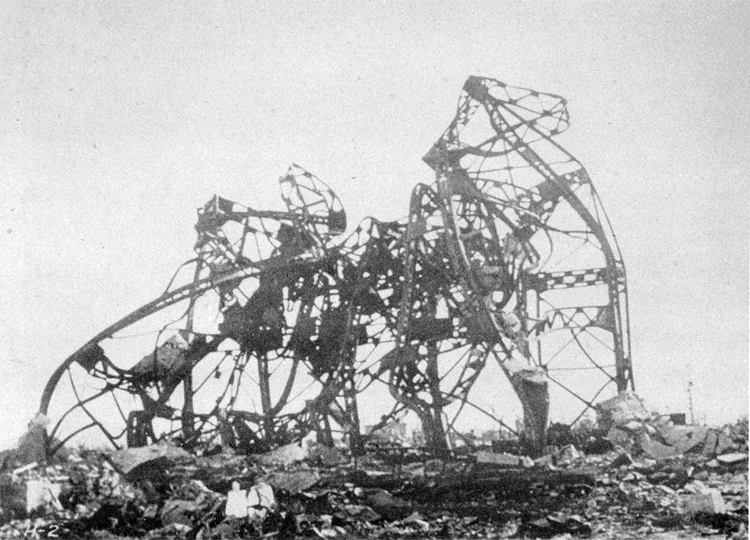
Figure 43. Steel structure, 0,5 mile east of X. This distorted structure shows that the blast force acted, almost vertically down in this area. Concrete rubble may be seen on the ground and fragments are still attached to the structure.
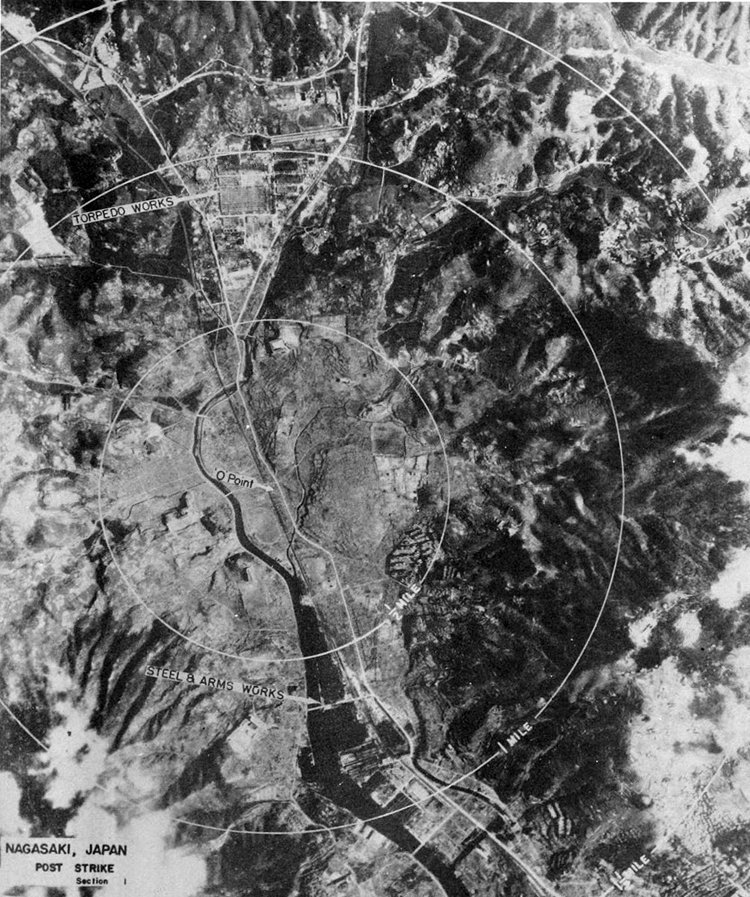
Figure 44. Aerial view of Nagasaki, after the bombing, showing the two principal targets.
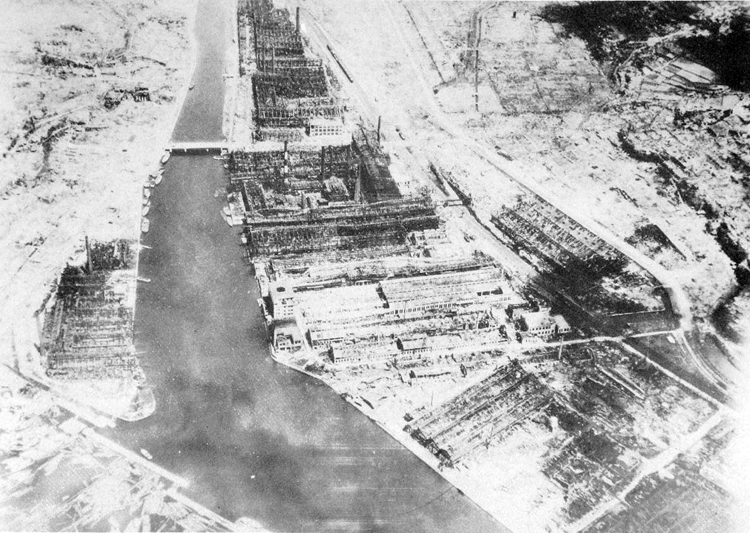
Figure 45. Aerial view of the Mitsubishi Steel and Arms Works in Nagasaki, from 0.3 to 1.2 miles south of X. This view looking north toward X shows that the middle three-fourths of the above plant with the damage caused by the atomic bomb. The long buildings in the south (between reinforced concrete offices) are concrete arch-roof structures that collapsed. The buildings on the west bank of the river are the remains of the Mitsubishi Steel Casting Plant.

Figure 46. Panorama of Hagasaki. This aerial view shows the devastation north of X and vest of the Urakami River. All of the heavily built-up areas were completely destroyed, and dwellings were seriously damaged almost to the tops of the hills. The large reinforced concrete building remaining in the left center of the picture is the Shiroyama School. The south wing facing X was badly wrecked.
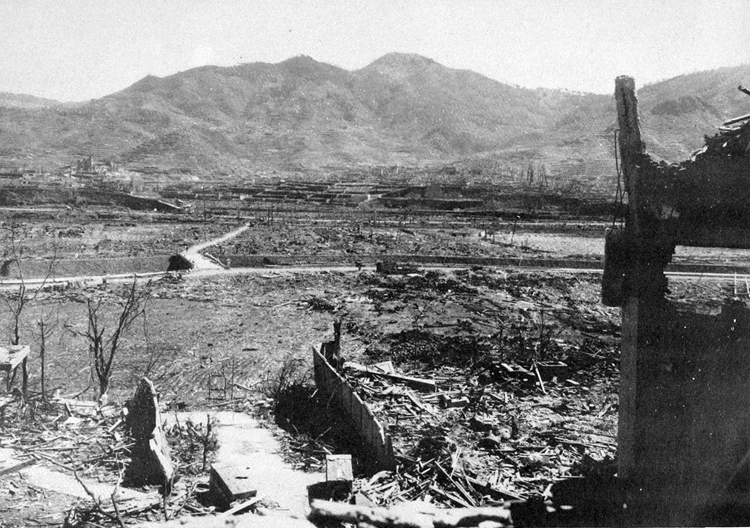
Figure 47. Nagasaki Panorama, taken from a point west of the Urakami River, looking east toward X, about 0.25 mile away. All of this area was thickly covered with small factory buildings and dwellings.
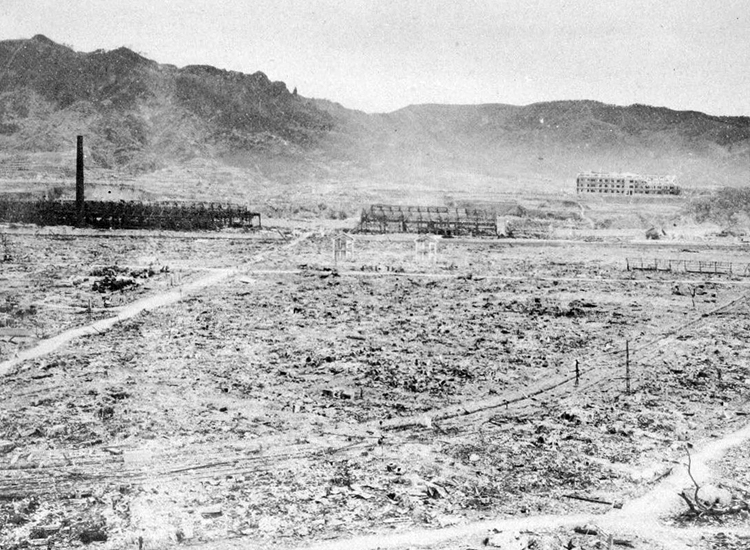
Figure 48. Panorama showing the general destruction in the industrial valley of Nagasaki, looking west from the Medical School and Hospital toward the reinforced concrete factory training school at the foot of the hills in the background. The north end of the Mitsubishi Steel end Arms Works can "be seen in the middle portion of the picture. The reinforced concrete chimney, though still vertical, was cracked by the blast. This area was covered with factories and homes. The franks of the street railway trolley were covered with debris, "but were not otherwise much damaged.
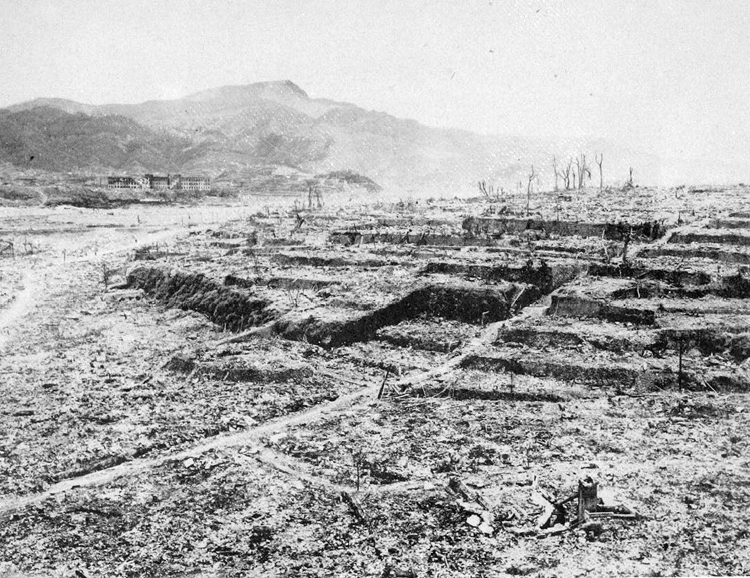
Figure 49. Panorama looking northeast from the Nagasakl Medical School and Hospital toward X. This area was covered with small factories and homes.

Figure 50. Panorama of Nagasaki, looking east toward the ruins of a large church. The small dwellings in the center of the picture were erected after the blast.
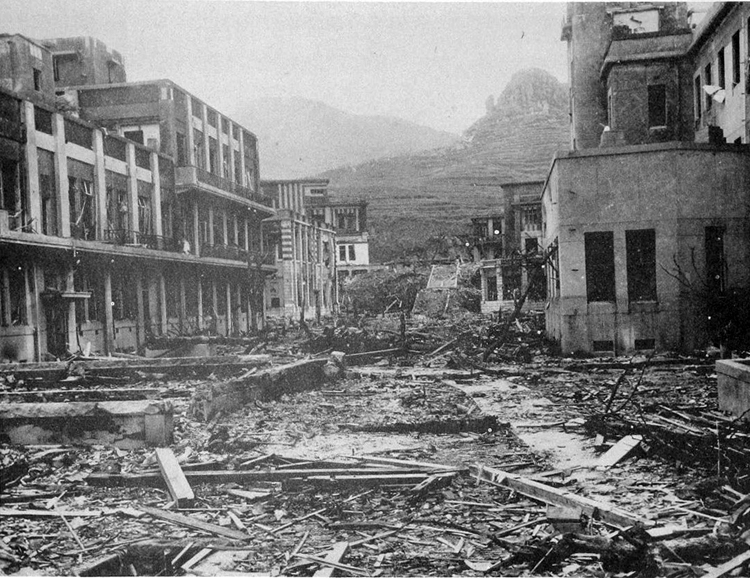
Figure 51. The Nagasaki Medical School and Hospital, from 0.4 to 0.55 mile southeast of X. This view allows one of the court yards, and several of the buildings of modern construction. The first building on the left (far end - second story) was hit by a bomb eight days before the atomic bomb hit Nagasaki.

Figure 52. Nagasaki Medical School and Hospital, showing a room in the hospital building on the southeast corner on the second floor, facing away from X. The damage shown is the result of an internal explosion caused by a bomb dropped on 1 August 1945, eight days "before the atomic bombing. This picture illustrates the modern reinforced concrete frame used in 22 of the buildings of the Nagasaki Medical School and Hospital.

Figure 53. A granite monument, 0.4 mile from X, at the Medical School in Nagasaki, which was toppled and moved by the force of the blast.

Figure 54. The roof of a reinforced concrete school building, 0.25 mile west of X. This view shows the damage to the reinforced concrete and tile roof resulting from the blast wave.
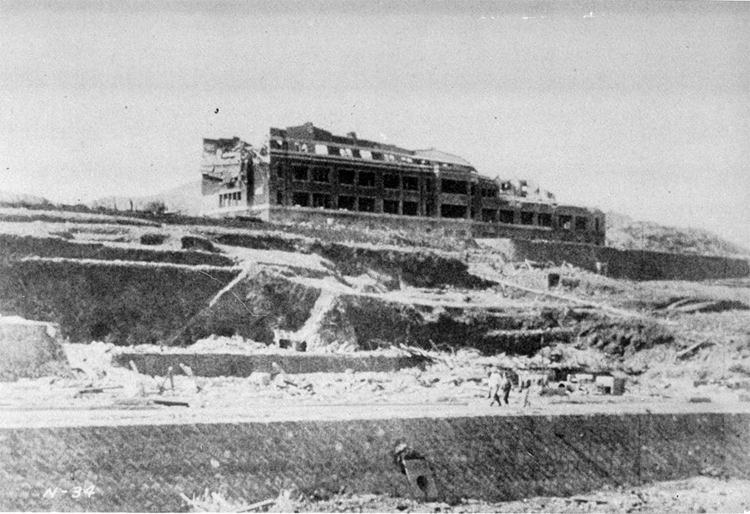
Figure 55. Reinforced concrete school building, 0.3 mile southwest of X. This building was used as a factory training school. The damage on the left end resulted from a parapet wall pulling loose. Damage on the right end was caused by failure of wall columns which permitted collapse of structural steal roof trusses.

Figure 56. Heavy machine shop, approximately 0.4 mile northeast of X in Nagasaki. This view shows the failure of light concrete wall columns and the collapse of the roof.

Figure 57. Wrecked church approximately 0.4-mile northeast of X in Nagasaki. The large expanse of walls with few openings offered great resistance to the blast wave and contributed to the failure even though the walls were massive and of brick construction.

Figure 58. Panorama showing the wreckage of wooden buildings approximately 0.25 mile west of Nagasaki. The pile of broken and splintered lumber in the foreground is all that remains of the building adjoining a reinforced concrete school building.
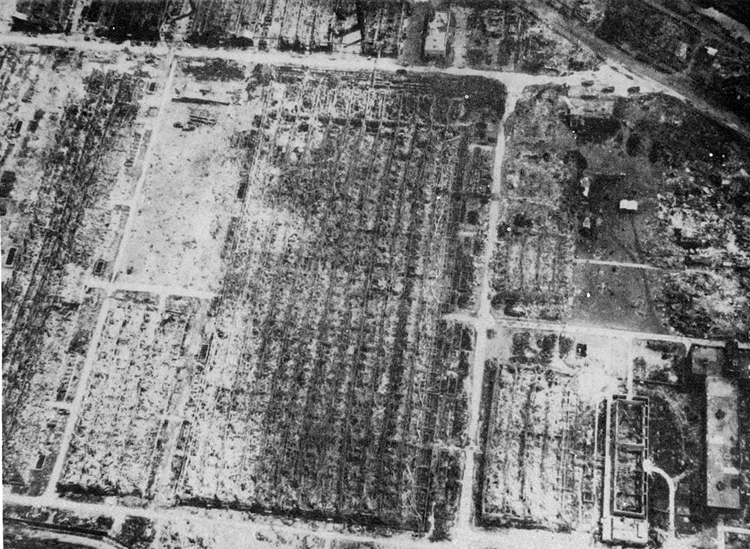
Figure 59. Aerial view of the Mitsubishi-Urakami Ordnance Works (Torpedo Works), extending from 0.7 to 1.0 miles north of X. Many of the buildings were almost completely flattened into a mass of twisted steel and Tyrolean timber. The reinforced concrete Research Laboratory building in the right foreground sustained only moderate damage.
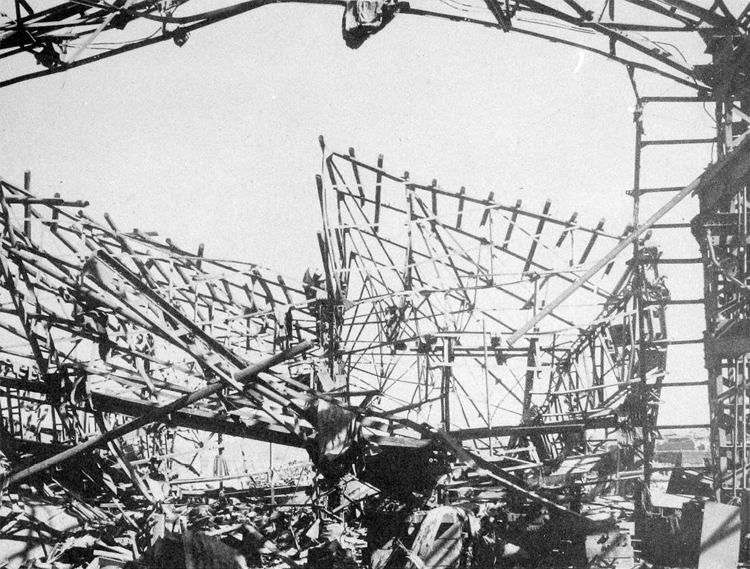
Figure 60. A view of one of the factory buildings with saw-tooth roof trues in the Mitsubishi-Urakami Ordnance Works, 0.9 mile from X. These trusses were very lightly constructed of light, steal members. The roof failed from the thrust of the bomb blast, and its failure collapsed the purlins and caused the roof to fall in generally.
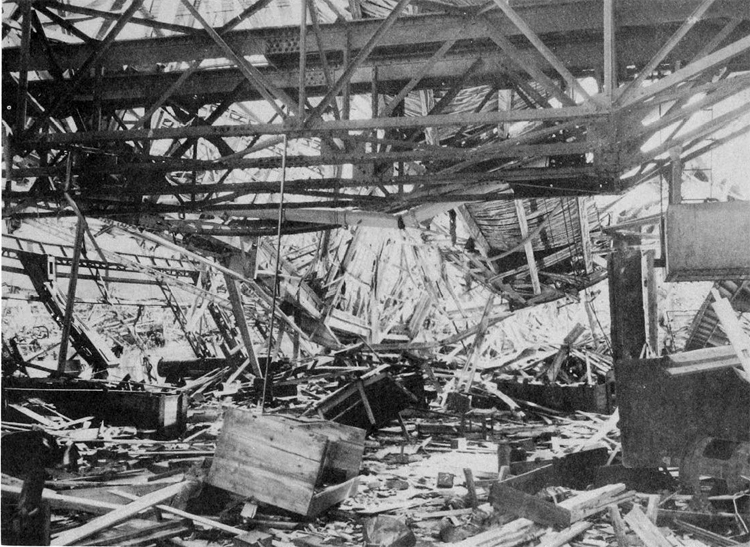
Figure 6l. A shop building approximately 0.9 miles from X, in the Mitsubishi-Urakami Ordnance Works. This building was a total loss. The extremely light steel construction and the extensive use of wood com¬bined to fora a very weak building.

Figure 62. Interior view of one of the machine shops in the Mitsubishi-Urakami Ordnance Works, approximately 0.9 miles from X. The siding and. roofing was stripped away by the blast. The reinforced concrete Pill-Boxes in this building (aisle in the center of picture) indicates that prison labor was used here.
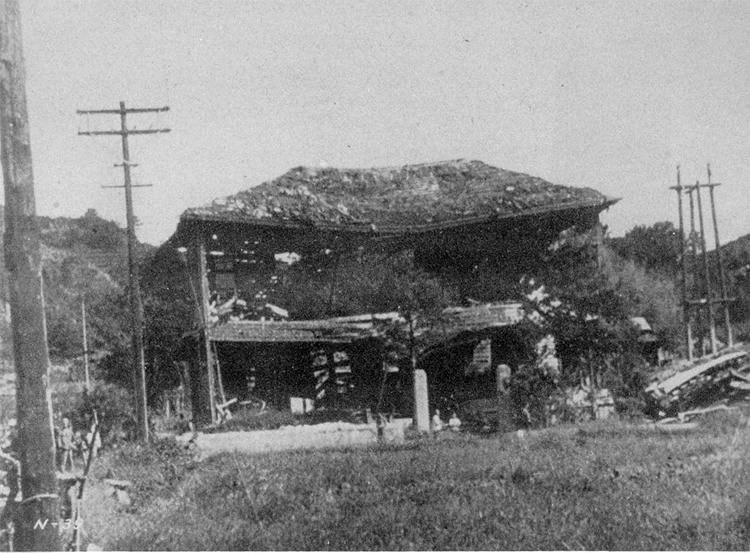
Figure 63. Wooden building 1.5 miles northeast of X in Nagasaki.
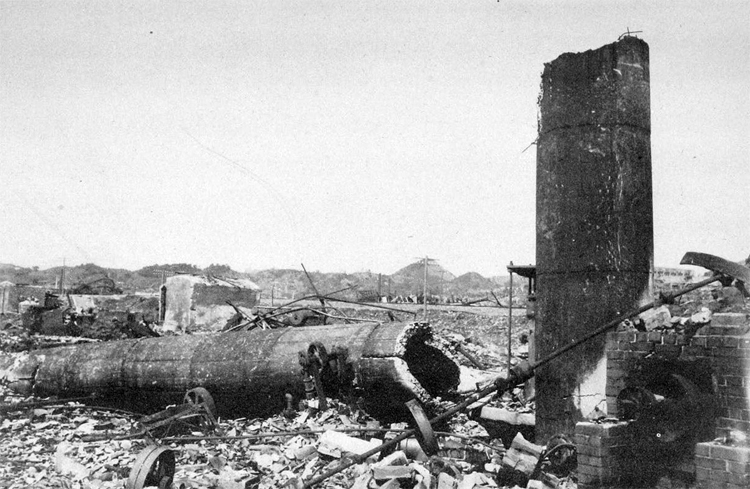
Figure 64. Small reinforced concrete chimney, 0.25 mile north of X. This chimney was knocked over approximately 15-feet above the base. The chimney was 4.3 feet In diameter and 65-feet high. The walls were 6-inches thick and the reinforcing consisted of 5/l6-inch round bars spaced on 6-1/2-inch centers. The horizontal reinforcing was l/8-inch round bare with an 8-inch spacing. The chimney was unlined.

Figure 65. Reinforced concrete bridge, 0.50 mile north of X in Nagasaki. This bridge consisted of a reinforced concrete T-beam deck with concrete abutments and piers. The three spans are approximately 35 feet long each. Failure of the west span resulted when the deck was knocked off the pier and abutment bj the force of the blast from the south, causing the span to drop to the river bed. The remainder of the bridge, except for the hand rail, was undamaged.

Figure 66. Steel plate girder double track railway bridge, 0.1 mile southwest of X in Nagasaki. The plate girders were moved to the left by the blast, the railroad tracks were bent out of shape and the trolley care were completely demolished. The trolley poles were not knocked down by the blast.
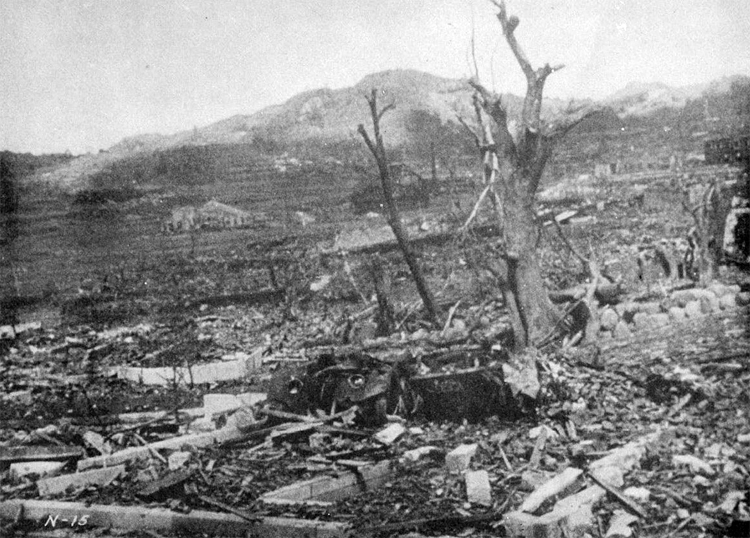
Figure 67. A view of the Urakami Gas Works, 0.6 mile north of X in Nagasaki. The wreckage of auto-mobiles is seen in the foreground.
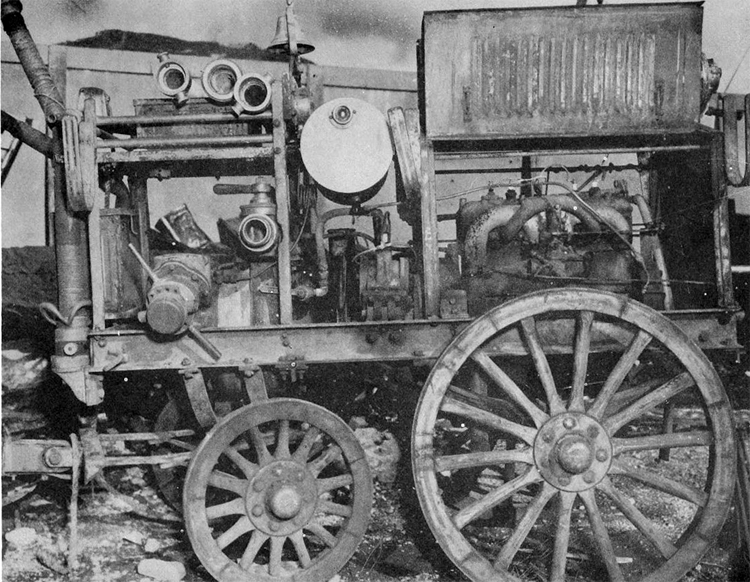
Figure 68. A typical Japanese fire engine of the type which formed a large part of their obsolete equipment. They had. a limited number of much more modern fire engines.
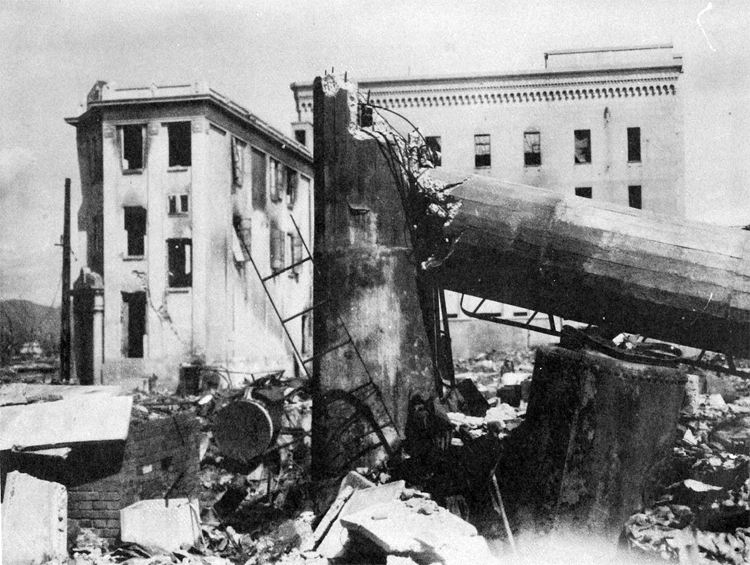
Figure 69. A concrete chimney 600 feet east of X in Hiroshima.
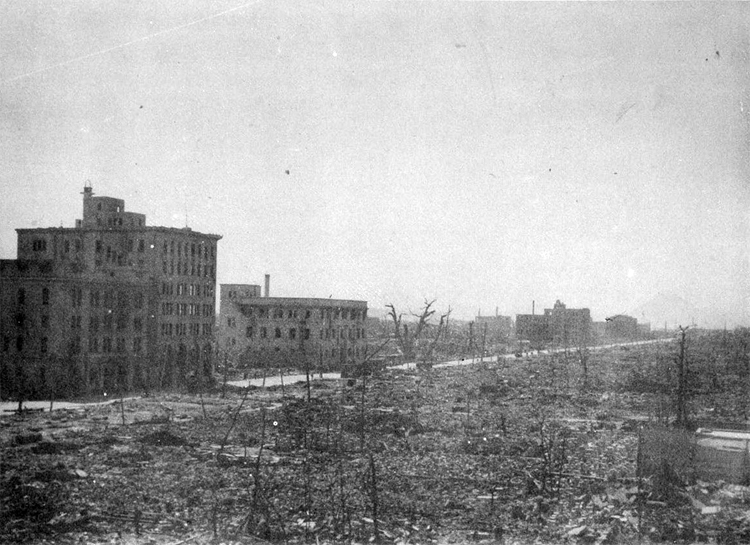
Figure 70. A view from the top floor of a building 250 feet east of X in Hiroshima.

figure 71. A view from 200 feet east of X in Hiroshima. The military area is In the background of the picture.
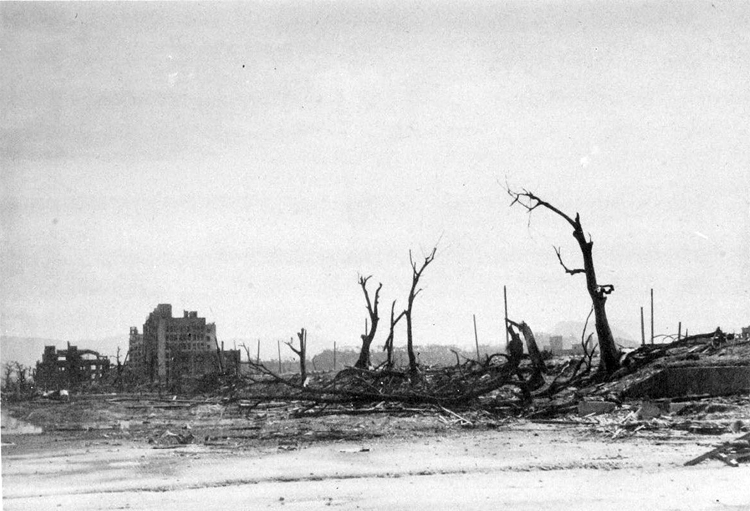
Figure 72. Looking east from inside the Hiroshima Military Area, near the Junction of the street car line.

Figure 73. A view looking west northwest from a point 500 feet from X in Hiroshima.

Figure 74. An apartment building 2,600 feet west of X In Hiroshima. The very large window space was instrumental in reducing the effect of the blast and permitting the frame work to remain standing.
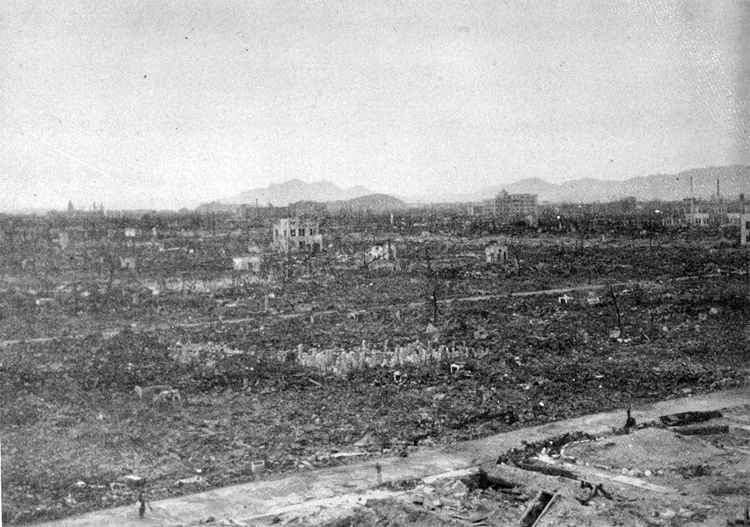
Figure 75. Hiroshima Panorama
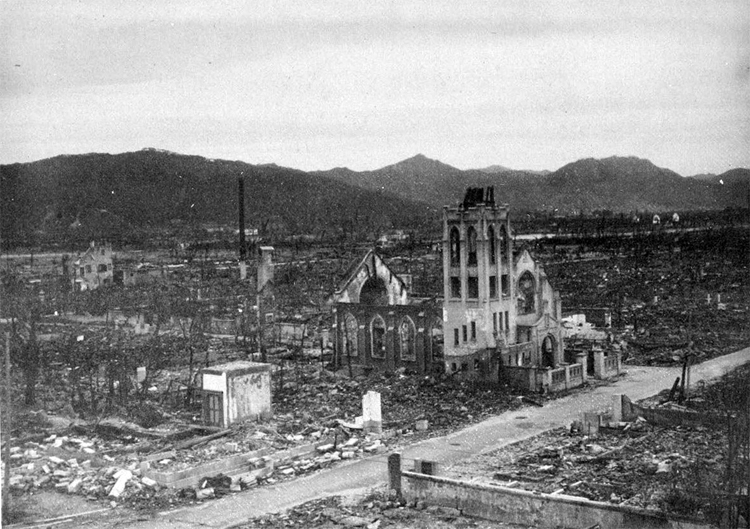
Figure 76. A view of a Hiroshima church 2,900 feet east of X in Hiroshima.

Figure 77. View of a Hiroshima bridge, 4.400 feet east of X
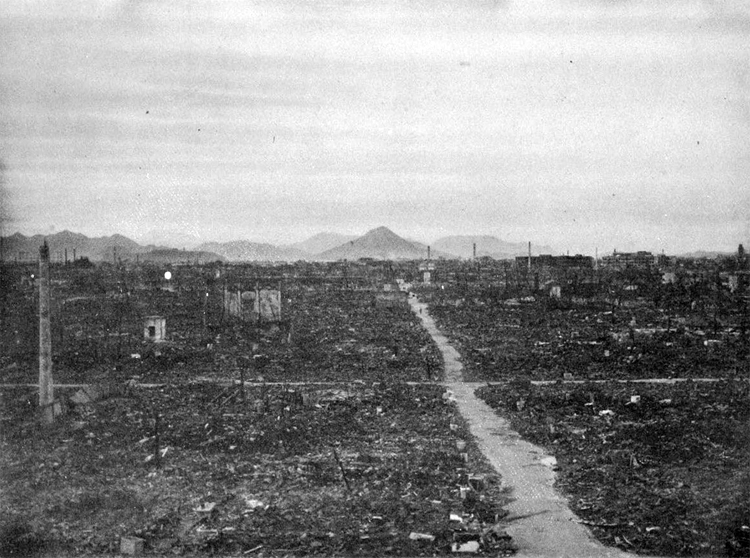
Figure 78. Hiroshima Panorama from a point 2,200 feet south of X.

Figure 79. A view of Japanese houses 5,700 feet south of X in Hiroshima. This point is about at the limit of complete destruction of Japanese houses.
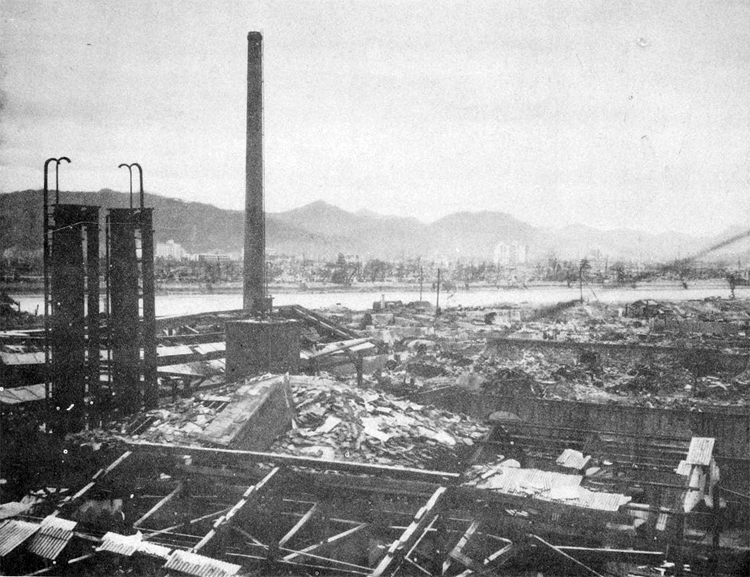
Figure 80. A view from a point 6.500 feet southeast of X.
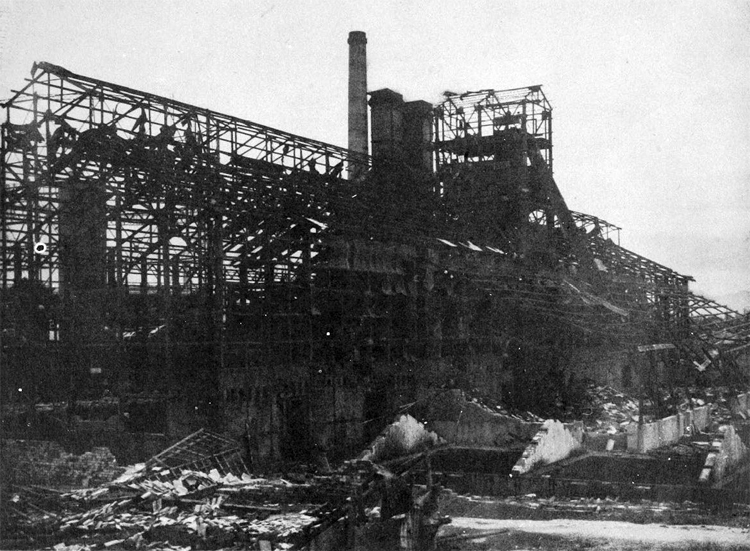
Figure 81. The Hiroshima Gas Works, 6,500 feet from X. The sheeting has been ripped from the steel frame and the directional force of the blast is shown by the bent frames on the right.
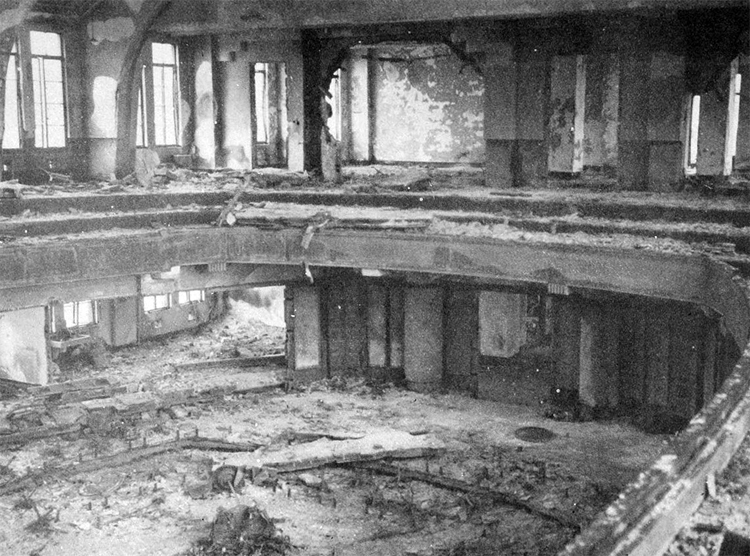
Figure 82. The Auditorium of the Hiroshima Municipal Office building, 3,600 feet south of I, showing heavy fire damage and structural damage.
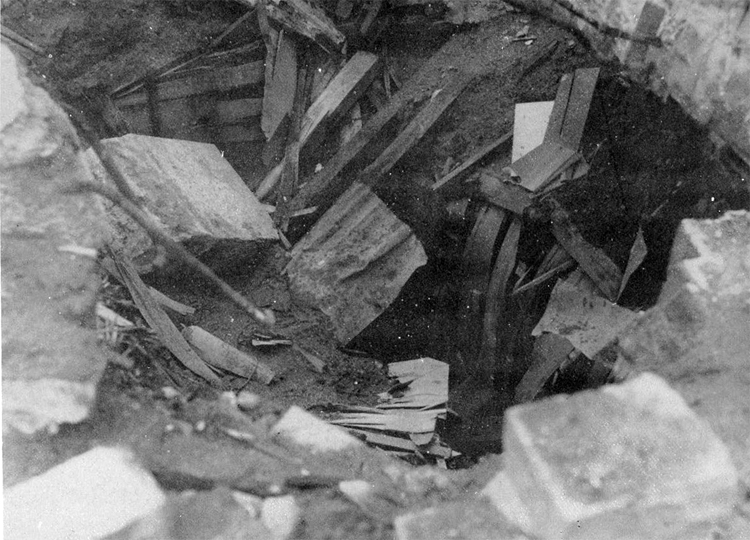
Figure 83. A Japanese air raid shelter 1,000 feet from X, showing the effect of the downward pressure of the blast.
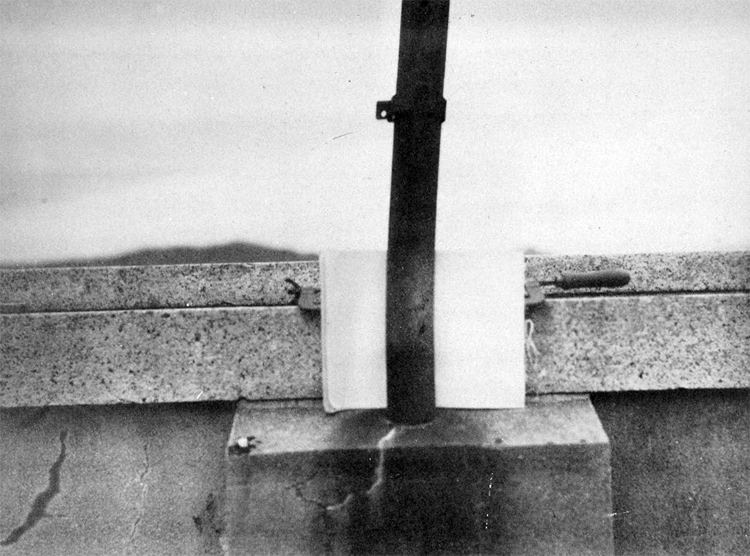
Figure 84. Flag pole on a tank building in Hiroshima, 2,900 feet from X. The pole was bent and the concrete base cracked by the force of the blast.
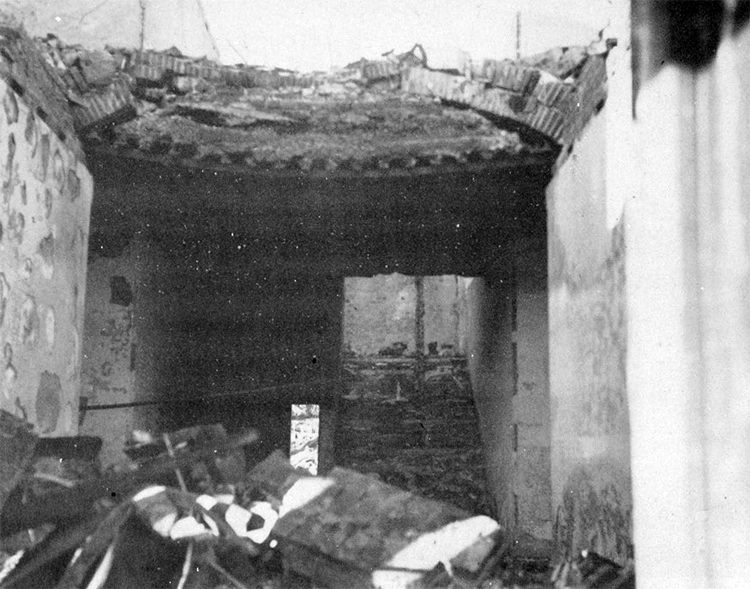
Figure 85. The Japanese Army Fifth Division Headquarters, 2,700 feet north of X. A network of street car rails had "been placed across the principal walls and ten inches of concrete were on the roof.

Figure 86. Tire engines brought into Hiroshima after the bombing.
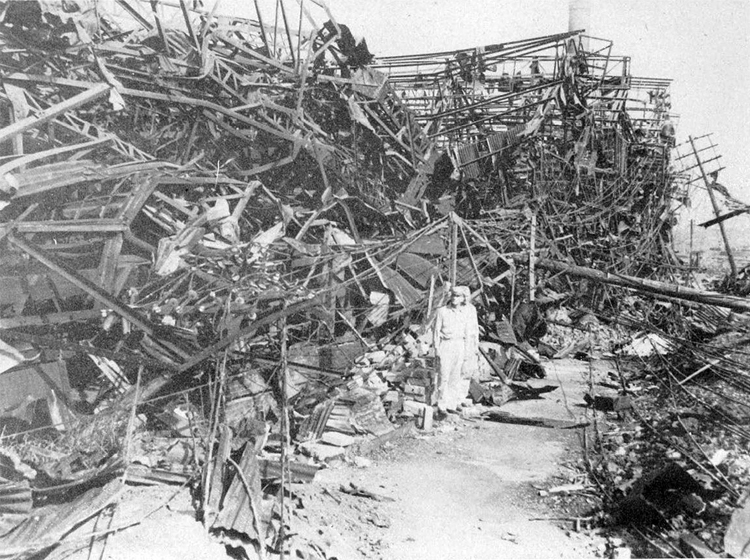
Figure 87. The hydraulic powerhouse of the Mitsubishi Steel and Anna Works in Nagasaki, 1,900 feet from X,
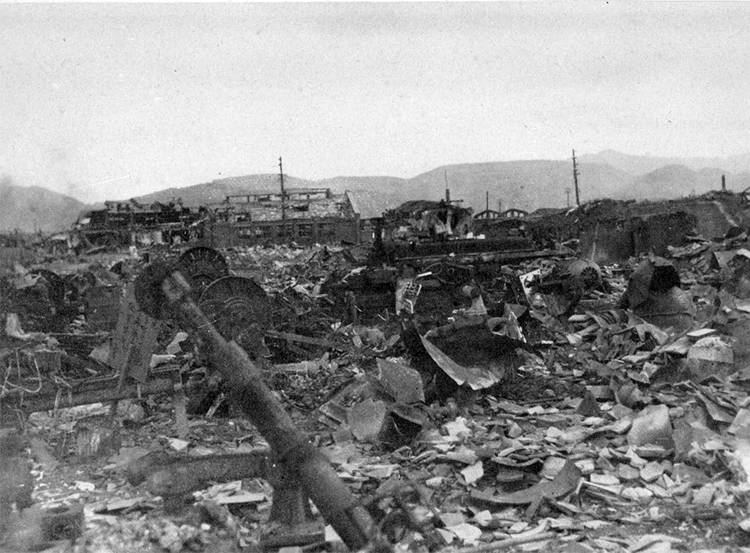
Figure 88. The remains of a small factory, 6,000 feet from X in Nagasaki.
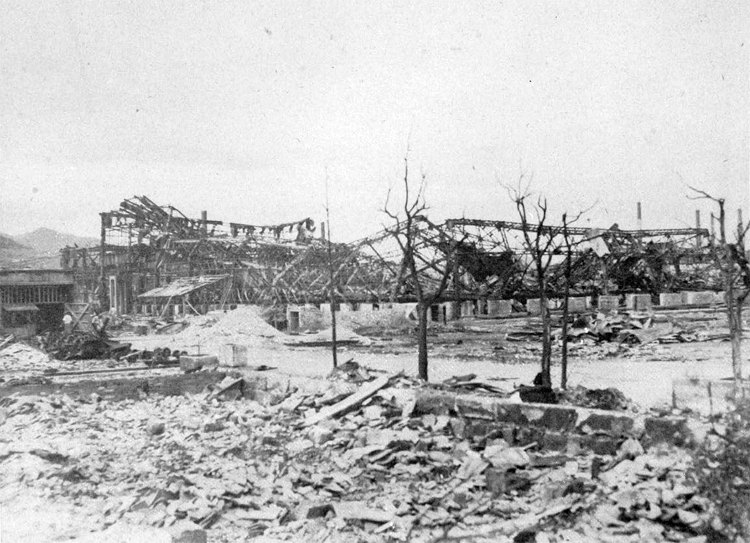
Figure 89. A wood working plant, 6,000 feet south of X in Nagasaki. Very heavy fire damage was experienced here.
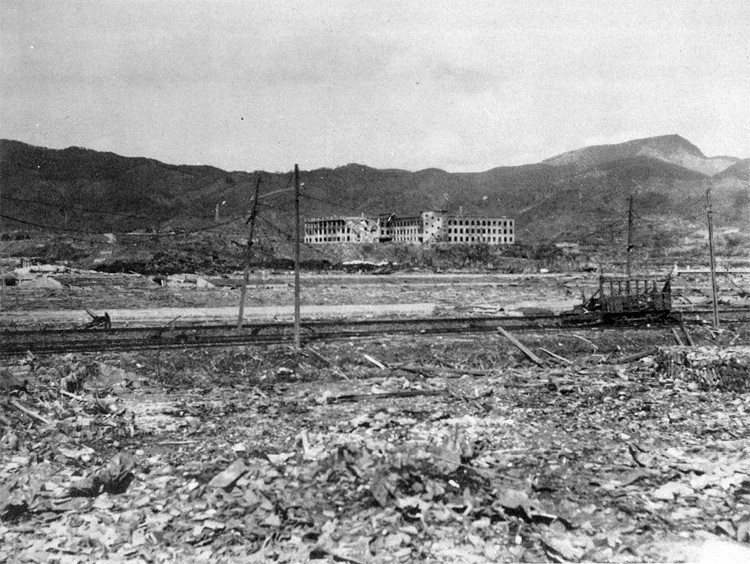
Figure 90. A view from X looking toward the Shiroyama School in Nagasaki.
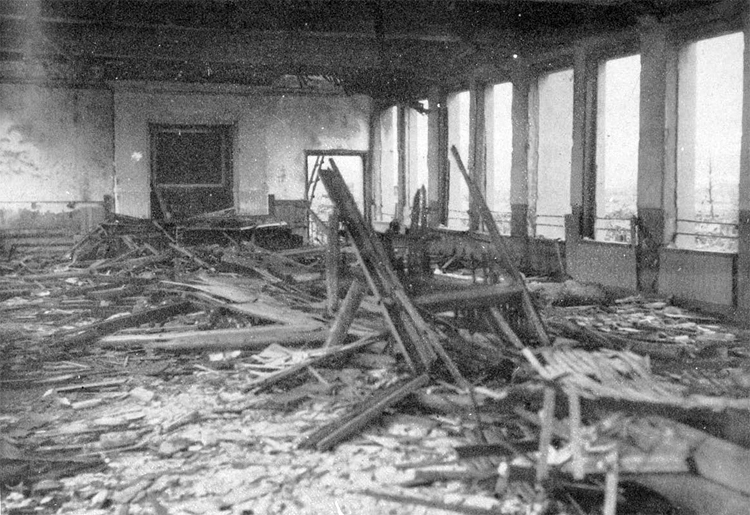
Figure 91. Interior of the first floor of the school building 1,200 feet from X in Nagasaki, showing failure of partitions. This ia a typical building which appears comparatively undamaged to the casual observer from a small distance.
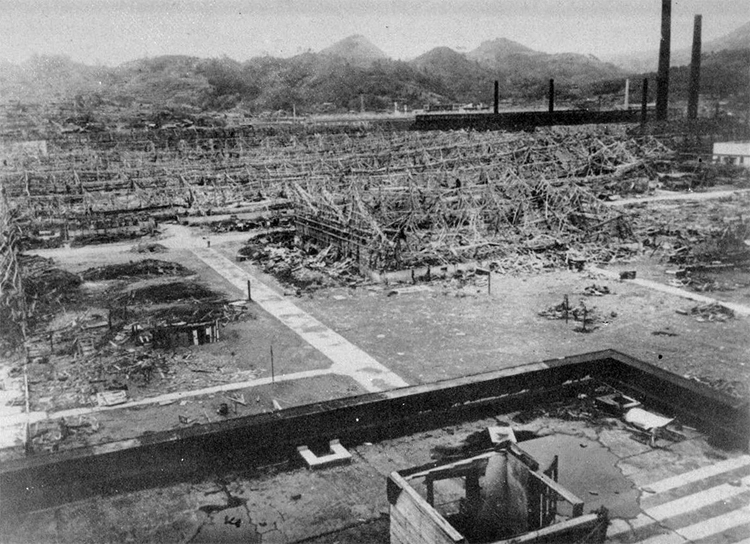
Figure 92. The Torpedo Works in Nagasaki.
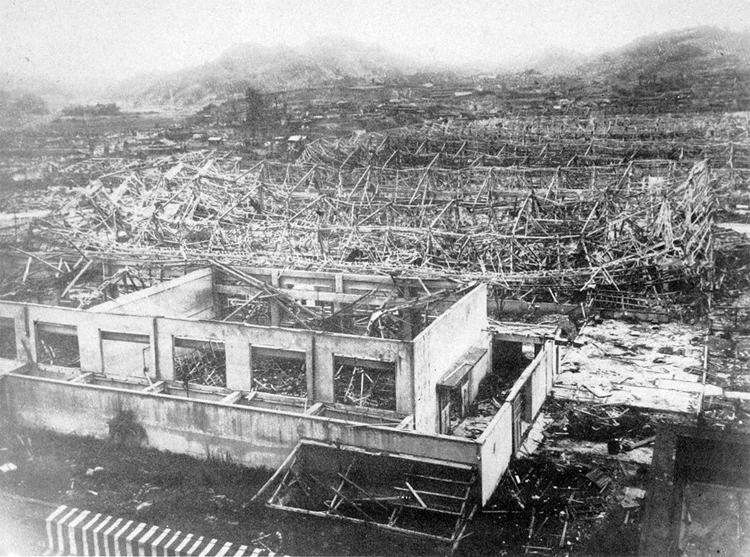
Figure 93. The Torpedo Works in Nagasaki, 4,200 feet from X.
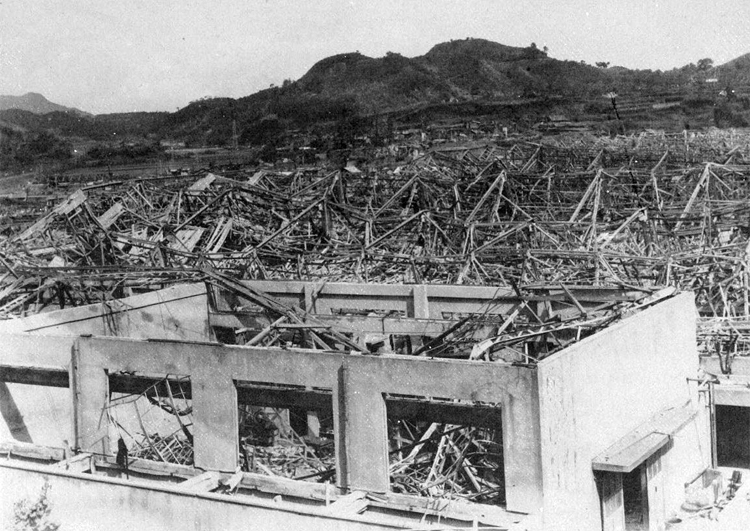
Figure 94. The Torpedo Works in Nagasaki, 4,200 feet north of X,
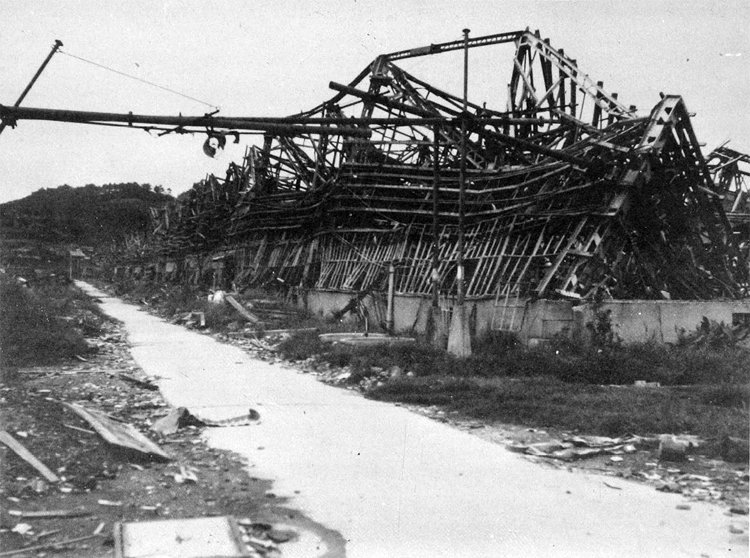
Figure 95. The Torpedo Works in Nagasaki, 4,200 feet from X.

Figure 96. Church 2,100 feet northeast of X in Nagasaki. The church walls were 2 feet thick, and the end walls 3 feet thick.
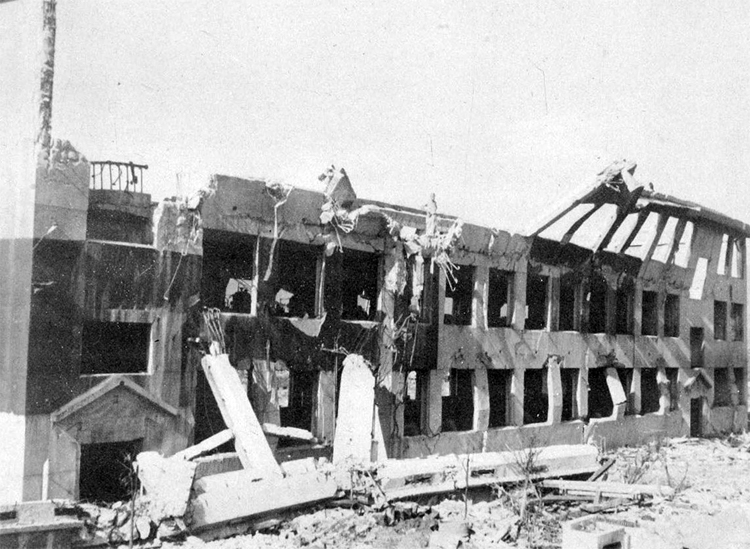
Figure 97. Heavy machine shop 2,200 feet northeast of X in Nagasaki.

Figure 98. A tree snapped by the blast in Nagasaki, 1,000 feet from X.
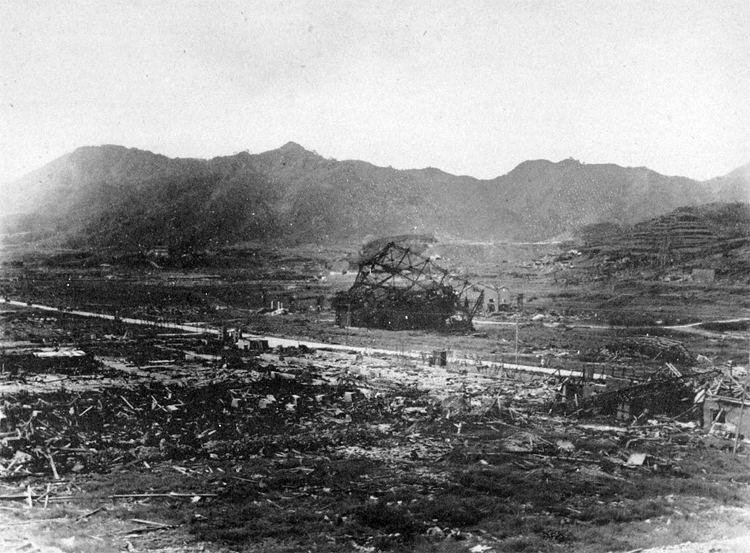
Figure 99. Looking southwest from the Torpedo Works over the Gas Works toward the Shiroyama School, in Nagasaki. The erect telephone poles were put in place after the bombing.

Figure 100. Damage to tile roof 11,000 feet south of X in Nagasaki.

Figure 101. Damage in a ravine, 7,000 feet south of X in Nagasaki. Very marked protection was afforded by a hill.